inTENSE
ISSUE N#2/2030 Orbital Opulence

1
Orbital Opulence ISSUE N#2
Publisher Futurity Systems
www.futurity.systems
hello@futurity.systems
Editor-in-Chief
Mark Bünger
Founders
Cecilia MoSze Tham & Mark Bünger
Design and Art Direction, Prompt Writer
Magda Mojsiejuk
Contributors
John Cumbers
Cortney Harding
Ryan North
Sean O’Connor
Dan Silveira
Laila Snevele
Miki Sode
Helen Tung
Iga Węglińska
Sabine Winters
©MARSBOUND April 2023
All Rights Reserved
ISBN 978-1-960954-01-5
inTENSE

inTENSE
magazine from the future
N#2 Orbital Opulence
Lifestyle
ISSUE

Most analysts wouldn’t say their forecasts are science fiction, but they admit they are calculation plus invention. Expert intuition in numerical format. Rigorously imaginative roadmaps to better futures.
inTENSE leans into this future-set fiction as good sci-fi does: not to predict a specific scenario, but plausibly and logically to tell a story tied to the present day, about the world, the people, and the things that we see around us now.
Some of the stories in this issue may make you gape in wonder, or raise an eyebrow in skepticism. But the technologies and businesses, creations and trends, and even (many) people inside it are all extrapolations from 2023. The same way “hard” science fiction requires its stories to be technically at least plausible, we do the same with the environment and economics, spacecraft and startups, fashion and food, and even art – which is finally taking more place in space. You can visit the spaceports, download the investor brochures for the asteroid miners, join NASA’s challenges to grow food on the moon, and even sign up for the BetaSpace festival taking place offworld seven years from now.
While Issue #1, the Culturian Age, was largely written and illustrated with AI, this issue about Orbital Opulence features interviews and writing by some amazing talents with deep expertise in relevant fields:
• Miki Sode, Former Commercial Innovation Manager for the International Space Station National Laboratory, and now a lecturer at Stanford’s d.school
• Ryan North, comic book writer and author of some of the best science books on shelves, like “How to Invent Everything: A Survival Guide for the Stranded Time Traveller“
• Cortney Harding, XR/Metaverse expert and Adjunct Professor, NYU
• John Cumbers, a former NASA scientist and founder of the synthetic biology community that inspired much of the Culturian issue, as well as the real 2019 event BetaSpace
• Helen Tung, space lawyer (yes, a real thing) and poet
• Laila Snevele, Sensory food designer
• Sabine Winters, founder of Future Based, and Philosopher of Science in residence on the European Space Agency (ESA) Advanced Concepts Team
• Sean O’Connor, Senior UX Designer at Blue Origin
• Iga Węglińska, PhD in Fashion-tech, multidisciplinary designer and researcher specialized in human – garment interactions
• Dan Silveira, Service & Experience Design Consultant at IBM iX
Check out their 2030 Bios in the magazine and peek behind the 4th wall to read how the magazine was done.
We hope one morning when you wake up in 2030, you’ll feel a sense of déjà vu, and recall one of the stories that you read here like a remembrance in reverse, or the seed that started it all.
In the meantime, per aspera ad astra, and happy reading!
5
Preface
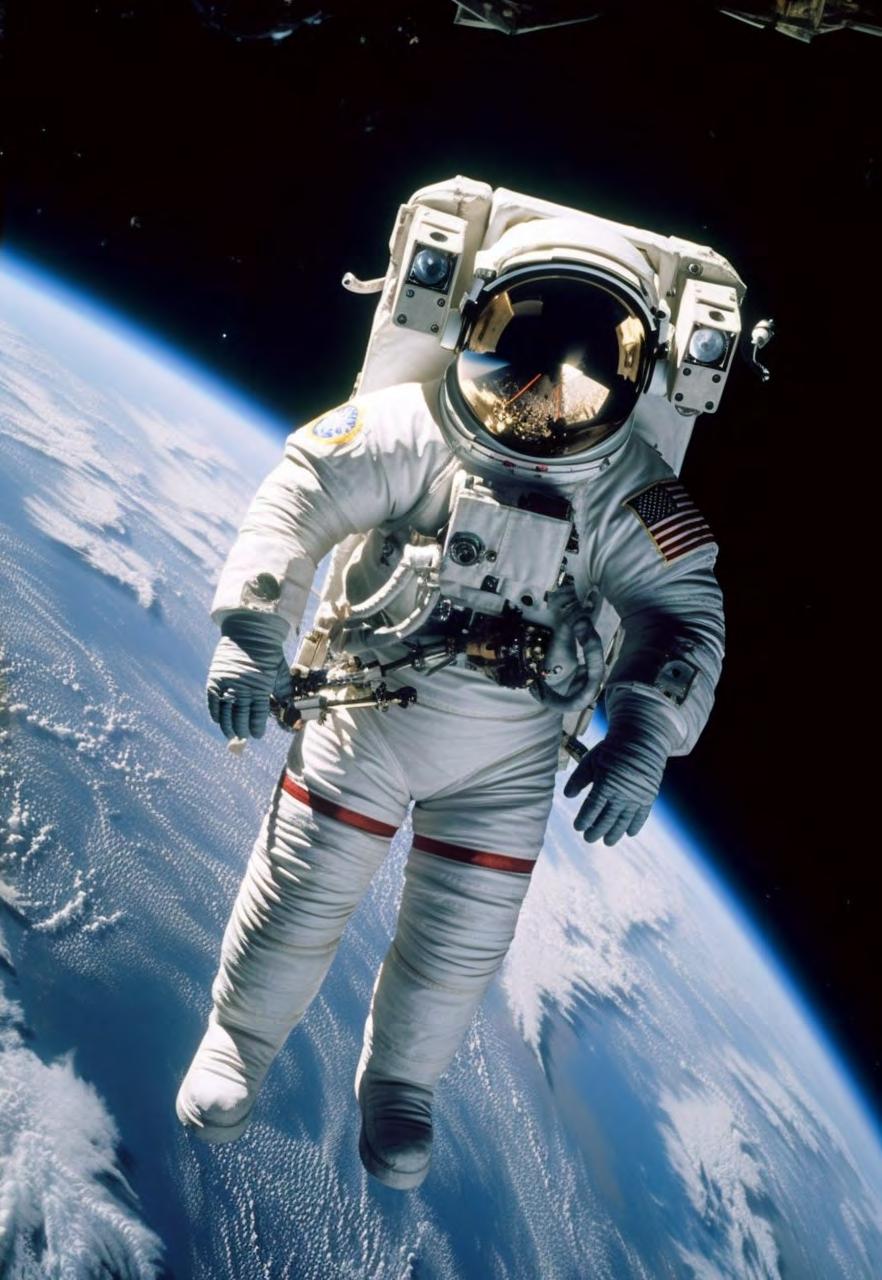
Dear inTENSE Readers,


We are super excited to bring to you this special issue dedicated to life in space. For us, this is a fascinating frontier, and it is not so surprisingly, becoming an ever more tangible reality - hopefully not just for the elite.
As we venture deeper into the cosmos, as future strategists, we want to look into some possible innovations that might transform the way we live and thrive beyond our planet. So in this issue, we delve into the developments that are shaping life in space.
Our cover story takes off in a luxurious journey to the Starview Hotel via the Melness Starview Spaceway™, where we learn about local culture and history, indulge in exquisite dining experiences, and revel in the unmatched service of Astronaut Class®, lifting off to marvel at Earth’s beauty from 2,000km up, to the Starview Hotel for an unforgettable adventure.
Hear from Iga Węglińska and how she led a cross-disciplinary team merging fashion, industrial design, and various sciences to create innovative clothing solutions for life beyond Earth’s atmosphere. From dissolvable subcutaneous implants to inflatable compression garments, e-kinesiology tapes, e-tattoos, biosensors, and glowing self-adhesive pads, she addresses the challenges of space travel and redefines beauty standards both in space and on Earth.
Discover the wonderful journey of the Kármán Nomad group, pioneers striving to build self-sustaining space habitats beyond Earth’s boundaries. Get a glimpse into their lives, as they harness unfiltered sunlight to power their orbital homes and foster a diverse community of trailblazers on the final frontier.
Other areas that we explore include the necessity of anti-radiation makeup to protect space travelers from the harmful effects of cosmic radiation, and even its potential impact on our skincare routines here on Earth.
We bring to you stories from the latest in space fashion to the cultural implications and impact of expanding our civilization beyond Earth. We hope that this and other issues of inTENSE spark your imagination and ignite your sense of wonder about the future.
Mark Bünger
7
Cecilia MoSze Tham
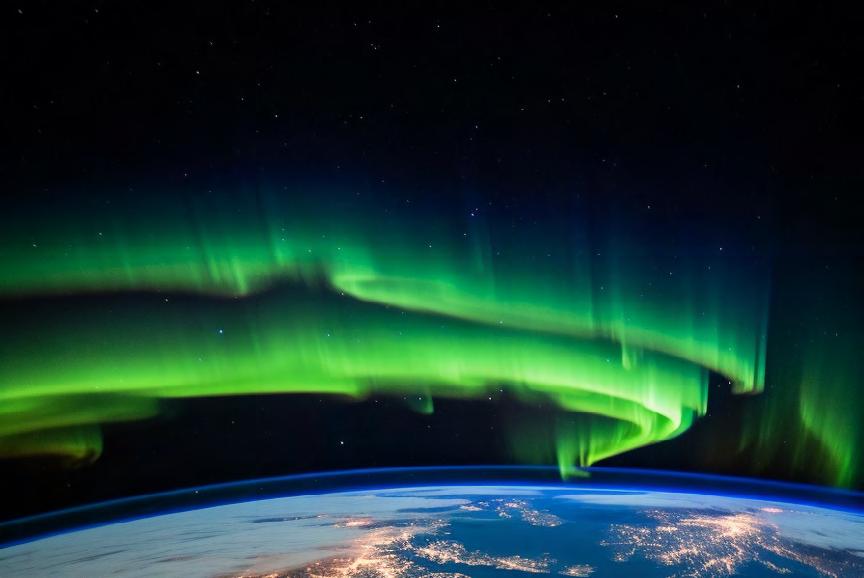


A trip to space in style! PG. 10 Kármán Nomads PG. 20 Looking Black to the Future PG. 32 Reshaped body PG. 46 Cos(met)ics PG. 54 Metaverse before Universe PG. 60 XRersize PG. 69


Taking a Bite out of Space PG. 74 NutriOrbs PG. 80 Cooking off-earth cuisine PG. 86 For everyone and art PG. 92 BetaSpace PG. 104 Escape Velocity PG. 110 4th Wall PG. 120
A trip to spacein style!
It’s not the destination, it’s the journey! But when it comes to space-cations, we like to ask: “why not both?”
Obviously we’re all about luxuriating for week (or three!) in orbit at the Starview Hotel . Who could pass up gazing down at all the splendor of Earth at once, before retiring to the zero-g spa and bathing in pure starlight? But that’s only part of the Starview experience, and it turns out that getting there is half the fun! When you’re looking to slip the surly bonds of Earth and dance the skies on laughter-silvered wings, you might as well do it in style… with some surprising, memorable, and above all authentic experiences along the way.
Enter The Melness Starview Spaceway™ : the crowning jewel of the Melness Space Authority (though, like most seasoned travellers, we simply call it “the MSA”). It’s your gateway to the stars – and a playground that just happens to be filled with locals who live, work and play right alongside you!
By Ryan North
History And Culture:
You’d be hard pressed to tell it today, but the early 2020s Melness was a sleepy collection of small townships and peat bogs in the north of Scotland. It offered the quiet life for the less than 700 locals who lived there… a little too quiet, in fact! Without tourism or economic development, Melness was facing a depression that threatened to end its towns once and for all. But luckily, when a few residents began exploring the idea of attracting a spaceport to save their beloved villages, the space startups listened. Sure, there were some bumps along the way – protests, lawsuits, the sort of distractions that accompany any large infrastructure project – but they were quickly overcome, and before long, the thrill of voyaging among the stars had come to Scotland!
10
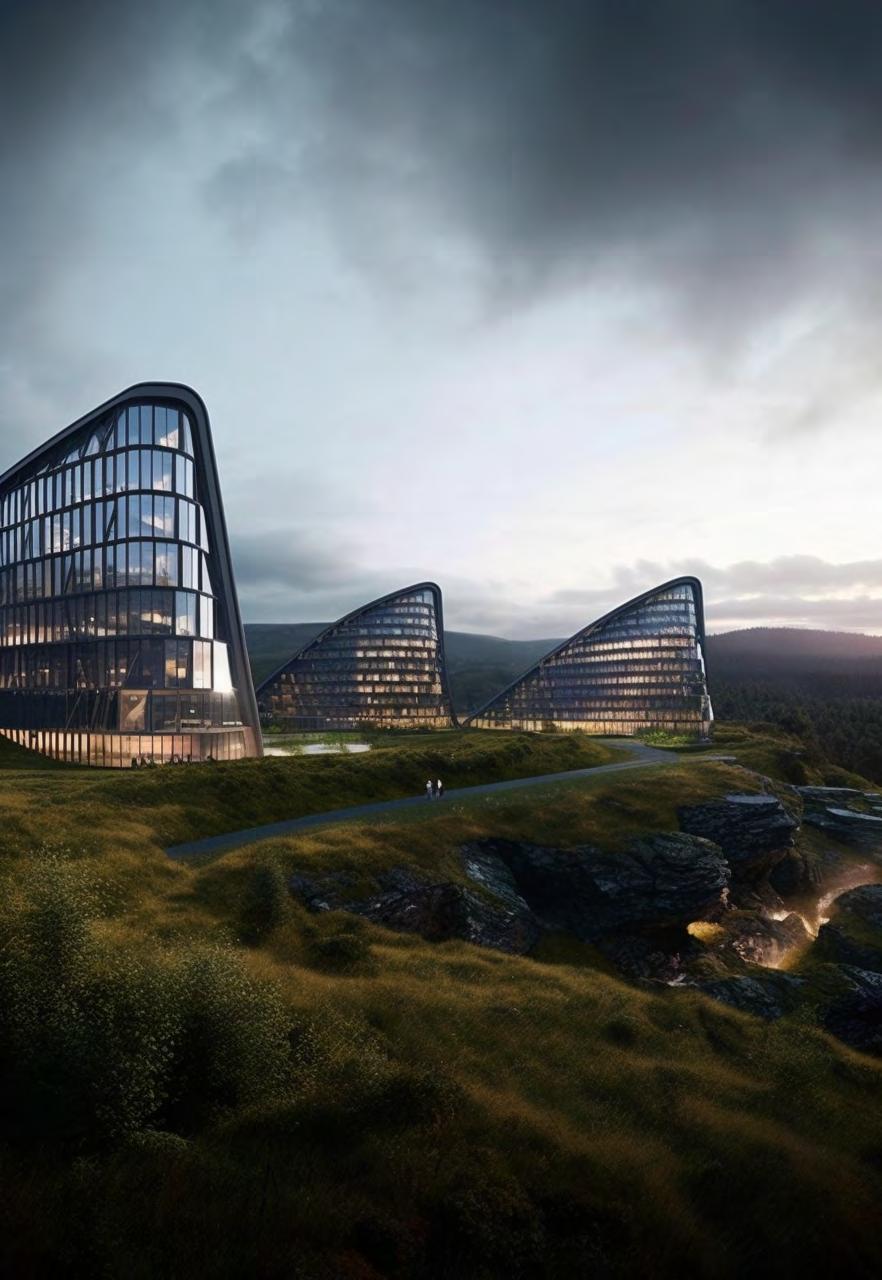
While the facility originally began as an industrial launch facility (with its first launch 2025 – fittingly, to bring parts of the famous Starview Hotel into orbit!) you’d be hard-pressed to tell that today! After partnering with Starview International Hospitality to become their exclusive Earthto-orbit guest transportation provider, the MSA pivoted to being the final word in luxury, and those efforts have paid off! Within the space of a few years, the staid and workmanlike “Melness Low Earth Orbit Spacecraft Launch Facility” transformed into the Starview Spaceway™ we know and love.
Today, you’d be hard-pressed to find anything in Melness that doesn’t cater to the space-bound: it’s an amusement park for both seasoned astronauts and the soon-to-be, and you’d be doing yourself a disservice if you didn’t plan at least a few days before (or after!) your trip to orbit to take in all the area and the MSA has to offer. You’ll be sure to encounter some friendly locals – and a whole lot of personality!
Where To Stay:
The Spaceway™ has plenty of hotels-before-your-hotel built right into its remarkable and sprawling spaceport complex – and don’t worry: while these accommodations may be on Earth, but they’re nowhere near down to Earth! Unique experiences abound everywhere you look. Guests at the Transorbital have access to the Zero-G Training Room, where large fans simulate weightlessness, and who could forget the Stratosphere Hotel and its famous launch simulator experience, where you can get a peek at what it’s like to take off from Earth, the Moon, or even from the rings of Saturn?
Don’t forget to pack the app!
No matter where you explore throughout the hospitality complex, smiles are free – and courtesy is guaranteed If you’re ever dissatisfied for any reason, a quick photo taken in the MSA Appstronaut® App (available on all major platforms) is all you need to do to quickly and easily alert the MSA to your dissatisfaction, and they’ll ensure they make it right. But don’t worry: despite the fact MSA employees incur financial penalties for each complaint, everyone is genuinely pleased to help!
By Author
12
A meal that’s truly out of this world!
Well Del Espacio uses space-grown ingredients in every dish, only their Signature Salad is made exclusively from orbital-grown ingredients. Kale, peanuts, sunflower seeds, sweet potatoes, poppy seeds, barley, and soybeans meet in a surprising medley of flavour – and it’s good for you too!

13
There’s really no way to go wrong, especially since every hotel on campus is guaranteed to carry a rating by Forbes Travel – Earth’s only independent travel guide – at four stars or above! Contact your travel agent for more information.
Food And Drink:
Of course, the MSA has its own series of restaurants, bars, coffee shops – and even our personal favorite retro “space race” diners! – peppered throughout the Spaceway™ campus. Top of the heap of our editors recommendations is Dominic’s : a must for a cultivated, bespoke pan-Earth dining experiences. The chefs have elevated both their craft and their cuisine to orbit (metaphorically!), making the Michelin star they’ve earned very appropriate! But if you’d like to send your tastebuds there literally, you can’t go wrong with Del Espacio , where everything on the menu, from the salads to the smoothies, incorporates at least one ingredient literally grown in orbit! It’s an dining experience that’s truly out of this world. Even simplicity travels in style at the MSA, with American fast-service restaurant Sonic offering a “SuperSonic Suborbital” burger exclusively to patrons of their Spaceway™ terminal locations.
But those are all within the MSA. If you’re willing to explore just little further off the beaten path – or rather, off the official spaceport campus – there are some real diamonds in the rough to be found. For our money, no visit is complete without a visit to Debbie’s , located in the public lands just outside Melness.
Your Flight:
Odds are, if you’re at the Spaceway™ , you’re flying Astronaut Class® – the first, best, and until recently, only class of spacefare available, where absolutely no expense is spared! Of course, with the passage of Resolution 783, economy classes have been mandated for space travel, with a handful of spots reserved on each flight for those passengers. Don’t worry: their cheaper way to space won’t impact your experience… and may even heighten it!
Imagine it: you’re relaxing by the pool when your smartwatch vibrates: it’s Amy, your personal MSA concierge letting you know it’s your turn to board. (Everyone in Astronaut Class® experiences the bespoke care and genuine courtesy of an authentic human providing one-on-one attention throughout the experience: no economy-tier AI “assistants” here!) Grabbing a quick towel and a change of clothes, you make your way down to the terminal and your reserved boarding lane.
14



15
Amy greets you warmly, helping you into a spacesuit in both your size and preselected style. As she drives you to the spacecraft in an open-air transporter, she points out several photo opportunities available on your way to the launchpad. As you settle into your seat on board – taking the luxury comfort kit from Amy before she departs with a smile and a cheery “bon voyage!” – you have to admit that as great as that experience just was, it’s just that tiny bit better knowing that those poor souls flying Economy got to see the highlights of this whole experience from afar, livestreamed to the in-terminal displays as they wait their turn to board. It’s a tough job flying Astronaut Class®, but somebody’s got to do it!
After the champagne and the countdown (feel free to join in!) you’ll experience liftoff! While the first astronauts experienced more than 6 Gs – six times the normal force of gravity! – on those early trips to space, the kinder, gentler liftoff the MSA has pioneered ensures you won’t feel more than 3 Gs, and then only briefly.
Besides, with lay-flat beds, it’s feels closer to a brief snuggle under a nice weighted blanket than anything else. 1 In less than two minutes the primary burn will be complete. Then it’s just one more burn to bring you into orbit, and when those engines turn off – the experience of gravity does too! You’ll be free to move about the cabin – looking down at our beautiful blue marble from 2,000km up – as the spacecraft completes its journey to the Starview Hotel.
And as that beautiful hotel grows in the distance – that triumph of engineering and hospitality, an absolutely unique achievement in the universe, and the place where your vacation truly begins – you might just find yourself agreeing that in some cases, getting there really is half the fun. Yes, Melness and the Spaceway™ truly are once-in-a-lifetime experiences… …until your next trip into orbit, that is!
1
If you’re over 65 or suffer from heart or bone conditions, be sure to consult with a doctor before any orbital trips.
16

17
Ryan North
Ryan North is an author who got his start in comics, writing series like The Unbeatable Squirrel Girl and The Fantastic Four for Marvel Comics, and even adapted Kurt Vonnegut’s Slaughterhouse-Five into a graphic novel with artist Albert Monteys. He’d also written bestselling nonfiction books like How To Invent Everything and How to Take Over the World, before giving it all up in 2029 to become a travel writer, which is what he happily does today. His favourite star cluster is the Pleiades.

18

19
Kármán Nomads
Sabine Winters
With the first small communities of nomads forming beyond the Kármán line the idea of living in outer space has become a very real reality. The Kármán line defines the edge of space and the beginning of outer space and is named after the Hungarian-American engineer and physicist Theodore von Kármán, who first calculated its altitude in 1951. Now, in 2030 the first group of 20 pioneers are trying to survive, live and thrive above this Kármán line. They are referred to as the Kármán Nomad group. By the late 2030s, they hope to have at least 3 different space habitats orbiting Earth, each one a pure marvel of engineering, designed to be self-sustaining, with a closed-loop system that recycles water, air, and other resources. Powered by a massive array of solar panels, which absorbs the unfiltered sunlight that is too inTENSE for Earth’s surface, these self-sustaining ships are now home to a diverse community of scientists, engineers, mechanics, artists, philosophers and
adventurers who volunteered to be the first human residents of the space habitat. Sabine Winters flew up for an interview.
The visionary input of Carl Sagan
50 years ago, astronomer, astrophysicist, and writer Carl Sagan published his series Cosmos: A Personal Voyage. Following the publication of the book, in 1980 Cosmos was adapted into a popular science documentary series for television, in which Sagan discussed topics such as extra-terrestrial life, Voyager expeditions, and the beginning and evolution of the universe. Sagan was a strong advocate for the exploration and study of space, believing that it was essential for humanity’s long-term survival and growth. It is becoming increasingly clear today what a visionary Sagan really was.
20

21
Sagan would definitely view the communities that are forming in the most outer layer of our atmosphere as a first step towards a nomadic life in space, and as a potential avenue for exploration and discovery. Thinking of it, the idea of searching for new ways of developing unique cultures and ways of living like the Kármán Nomads do, would have definitely intrigued Sagan. In the spirit of Sagan’s idea that space travel sets an overarching goal that requires mutual effort, this first colony of Kármán Nomads has members from 25 different countries, and asks for a worldwide collaboration between governments, companies and NGOs. All these different backgrounds and rich cultural heritage come together in pursuit of a common goal: Building the world’s first space community of all time, pushing the frontiers of humankind.
It is thus very fitting that as you enter the airlock of the Kármán Nomad Community, you are greeted with a plaque bearing the words Carl Sagan predicted in his Cosmos series:
“We were bounded only by the earth, and the ocean, and the sky. The open road still softly calls. Our little terraqueous globe as the madhouse of those hundred thousand millions of worlds. We, who cannot even put our own planetary home in order, riven with rivalries and hatreds; are we to venture out into space? By the time we are ready to settle even the nearest other planetary systems, we will have changed. The simple passage of so many generations will have changed us; necessity will have changed us. We are… an adaptable species. It will not be we who reach Alpha Centauri and the other nearby stars. It will be a species very like us, but with more of our strengths, and fewer of our weaknesses; more confident, farseeing, capable and prudent.”
Given the isolation and dependence on one another that comes with living in a space community, the importance of fostering a sense of shared purpose and responsibility, I immediately felt that this group has already set in motion the change Sagan was mentioning. The scientific and technological challenges posed by surviving in such a hostile environment, inspires a new lifestyle, pushing adaptability of humankind. Currently living with a group of 20 people in a SpaceX Starship - a posthumous gift from an anonymous philanthropistdemands high levels of operation and cooperation, and I was fortunate to have a week together with them.
The Kármán Line
This growing group of pioneers - in 2035 the residents hope to have acquired a second ship - have the difficult task at hand to become completely independent of supplies from Earth. They not only work together to conduct scientific experiments and develop new technologies, but also are finding ways to become fully self-sustainable. Fulfilling this task means not only surviving, but also finding ways of thriving. There is a not-to-be-underestimated role for creating art, music, philosophy and literature inspired by their unique surroundings. Moreover, they are experimenting with new forms of communication and interaction, developing the first traces of a new and unique culture, adapted to the challenges and opportunities presented by their space-based existence.
22

23
Despite the name Kármán Nomads, the spaceship is orbiting at an altitude far above the Kármán line. The Kármán line is the altitude where space begins and divides the Mesosphere with the Exosphere. The boundary was defined by an international team of The Federation Aeronautique Internationale (the World Air Sports Federation, or FAI) at the initiative of Hungarian-American physicist and engineer Theodore von Kármán. They established the Kármán Line in the 1960s, which is typically defined as 100 kilometers above the mean sea level, meaning it lies in the lower thermosphere. Living just above the Kármán line, would quickly expose the air nomads to the danger of falling out of orbit. One of the founding members, Maria Saienko, explained:
“We have named ourselves after the Kármán Line, because that’s where we will go when we pass away. It entails the ritual we are planning for our last journey, in which we’re literally going as a shooting star, as we enter the atmosphere of our home planet. Cremation by re-entry, and like going to Heaven in reverse. As we too return to where we came, we will burn brightly, as a farewell to our friends and a reminder of the eternity of all things.”
Hopefully that will be a long time in the future, and the community members have their hands more than full in the meantime adjusting to life in space.
“As we return to where we came, we will burn brightly, as a farewell to our friends and a reminder of the eternity of all things.”
Living above the Kármán line is a unique experience. We have to adjust to a microgravity environment, because everything floats weightlessly, and every movement requires deliberate effort’, says air nomad Safina Botha (53) a philosopher and bioengineer who joined the community three years ago. “Living in space makes me more than ever acutely aware of the boundaries that define our lives - the walls of the spaceships, the edges of the thermosphere, the borders of our territories and the flimsy boundary between my space suit and space. To survive in space, we are highly dependent on artificial intelligence and other technology.”
While living in space may have its challenges, they also have a front-row seat to some of the most spectacular views in the solar system. They watch as the Earth rotates beneath them, passing from day to night and back again in just 90 minutes.
Imagine, gazing up at the stars, unobscured by the blurring effects of Earth’s atmosphere, witnessing the occasional meteor shower, as bits of space debris streak past your habitat at incredible speeds. Safina agrees that living in space comes with its visual benefits. But, she says,
24

25

“The most treasurable moments are when the Aurorae Borealis and Australis (the Northern and Southern Lights) are clearly visible. I guess that it doesn’t mind whether you are watching it from Earth or from orbit, it’s just pure magic wherever.”
Creating a Place out of Space
While looking at the Northern Lights might be magical from Earth as it is from space, on a philosophical account there is something essentially different between living in space or living on Earth. Sally Odhiambo told me about the cultural changes the group is undergoing in the early years of their life aloft:
“One of the most profound changes that happened was the way we think about place making,” Sally states. “Place making? Yes. Indeed. On Earth, place making has traditionally been about creating physical spaces that were functional, aesthetically pleasing, and socially cohesive. A space gets meaning through making it a place. A place is a space where people meet, where rituals are performed, where social interaction take places, where we know the way.”
Places are connected to recognition, memory, emotions. Sally proceeds, “We recognize the yellow pavement, the smell of the earth, the vibrant colors of the trees and the grass in the summer. Because places nourish us with friendships, interaction, memories, we grow our roots. Our lives are intertwined and entangled with the Earthly place we grow up in, where we spend our childhood, where we work and relax, and create our homes. But in space, place making takes on a new dimension. It is about creating environments that are not just habitable, but that actively support human well-being, creativity, and exploration.”
The residents of space habitats are thinking about place making in a holistic way. “We have to consider not just the physical layout of our habitat, but also its social dynamics, its technological infrastructure, and its relationship to the wider universe.” mentions Pedro Kovalenko (39) who joined as community member number 18. “We have to create spaces that are optimized for human health and performance, with lighting, temperature, and atmospheric conditions carefully calibrated to support human biology. However, because we are travelling in a closed ship, it is equally important to continually keep re-designing social spaces to foster a sense of community and belonging, despite the constraints of living in a closed environment.”
Pedro also described how living as an air nomad also changes people’s perspective on the nature of place. “On Earth, place was often tied to a physical location, such as a city or a neighborhood. But in space, place this feeling is way more fluid and dynamic as we can move between habitats and colonies. He took me to explore the virtual spaces, such as shared virtual reality environments, that transcended physical location. Thus, place making remains a critical aspect of creating sustainable and thriving space habitats. But it is also a tool for exploring the frontiers of human experience, and for creating new forms of connection and meaning in a universe that is vast and endless. However, when it comes to the nomadic lifestyle, “you could argue that it is not much different than what life for many has become on Earth”, says Safina, referring to the seasonal migration, because many places have become too hot to live there in Summer.
27
“Also, it depends on how you look at what it means to be a place maker. We grow roots by the stories we tell each other. We have found rituals in safety measurements. Not only that, but we celebrate holidays and milestones with special meals and events, and form close bonds with our fellow inhabitants. Not only that, but we feel at home in this way of living.” Smiling, she continues, “You could say we have grown air roots. And I would argue that we feel more connected to that beautiful blue orb beneath us than most people on Earth do. While living in space definitely got its perks, viewing the Earth from here deeply changes your perspective on what it means to take care of this beautiful place.”
The Overview Effect
The feeling that one can get when looking at the Earth from space, was coined “the Overview Effect” by philosopher Frank White, not long after Sagan wrote Cosmos. It is the feeling of the sublime and great admiration of our spaceship that we call Earth. And to circle back to Carl Sagan, he would definitely have agreed with Safina. Sagan was deeply concerned with the preservation of life on Earth and the need to address global issues such as climate crisis, the incredible loss of biodiversity, poverty, and inequality. As Pedro ponders along the lines of Sagan, “most likely, in our wish for the exploration of other worlds, many more people will follow in our footsteps. Our presence in space, with future human expeditions to the planets, will only increase. We have travelled this way before, and there is much to be learned by studying new ways of living. I’m sure that what we are doing here, will have its effects on the way we take care of the Earth.” It can only be hoped, Pedro is having it right.
The passion to explore is at the heart of being human. This impulse to go to see, to know has found expression in every culture. Living as a Kármán Nomad is not only a commercial exploitation, although there is certainly an aspect of that. Beside the usual appeals of ambition, greed, and national pride, there is also the thirst for adventure. Moreover, the Kármán Nomads are motivated by a powerful scientific curiosity and a fascination with all things new: new plants, new animals and creating new places to live. The hope is that the deep understanding of the space residents in various scientific disciplines, including physics, biology, and engineering, will give rise to an interdisciplinary approach to the problems that the majority of the inhabitants of Earth are facing. With the first small communities thriving in space, a growing number of people will choose to live between the stars. But while the Kármán Nomads are the living example of what we are capable of as a human species, at least for now, it is clear that this nomadic life in space is a temporary solution or a backup plan for humanity, rather than a primary focus.
28
Sabine Winters

Sabine Winters is a researcher and philosopher of space. She is the founder and director of the platform Future Based, an award-winning and internationally recognized, interdisciplinary philosophy platform. With Scientific Imagination Sabine conducts ongoing groundbreaking research, interviewing leading figures in the space sciences, analyzing and exploring the ways in which imagination is shaping our understanding of the cosmos. In 2030 her research resulted in the publication of an elaborate methodology for an interdisciplinary approach to space exploration. Sabine’s work received widespread recognition, earning her a reputation as one of the foremost experts in the field of imagination and space exploration.
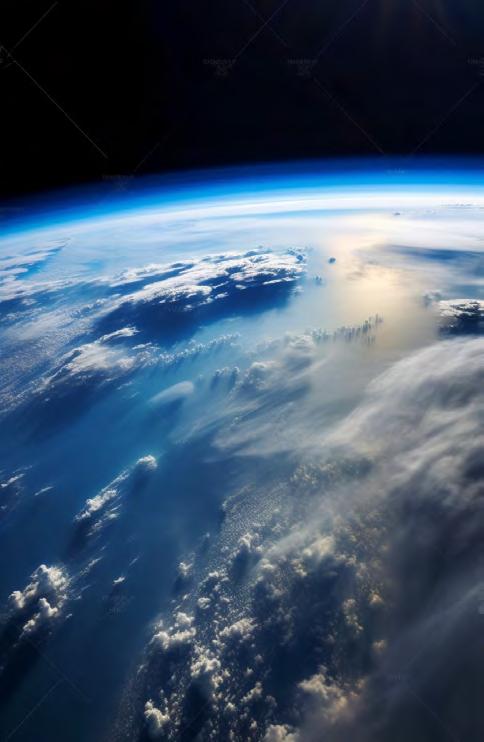
29


Looking Black to the Future
By Sean O’Connor
Since the early days of the space program, African Americans have been making history in space flight. From Guion Bluford, the first African American astronaut to travel to space, to Mae Jemison, the first African American woman in space, and Leland Melvin, who became the first African American to serve as head of NASA’s Office of Education, Black astronauts have broken barriers and inspired generations.
As space travel has become common and space tourism continues to grow, Black people are heading to the stars like never before. Thanks to the pioneering work of earlier astronauts of color, today’s travelers to high earth orbits and the station on the moon, Aquila II, they are ensuring that space stays black.
However there are still unique challenges and difficulties related to wellness that these astronauts face.
Most notably the dry conditions on many of the pressurized capsules affect the ability to care and moisturize Black textured hair in weightless and low gravity environments.
In response to this challenge, innovative solutions have emerged that have revolutionized hair care in space. With the help of these cutting-edge inventions, Black astronauts and space tourists can maintain healthy, stylish hair no matter where their travels take them. In this article, we’ll take a closer look at some of these inventions and explore how they are helping to make space travel more inclusive for everyone.
32
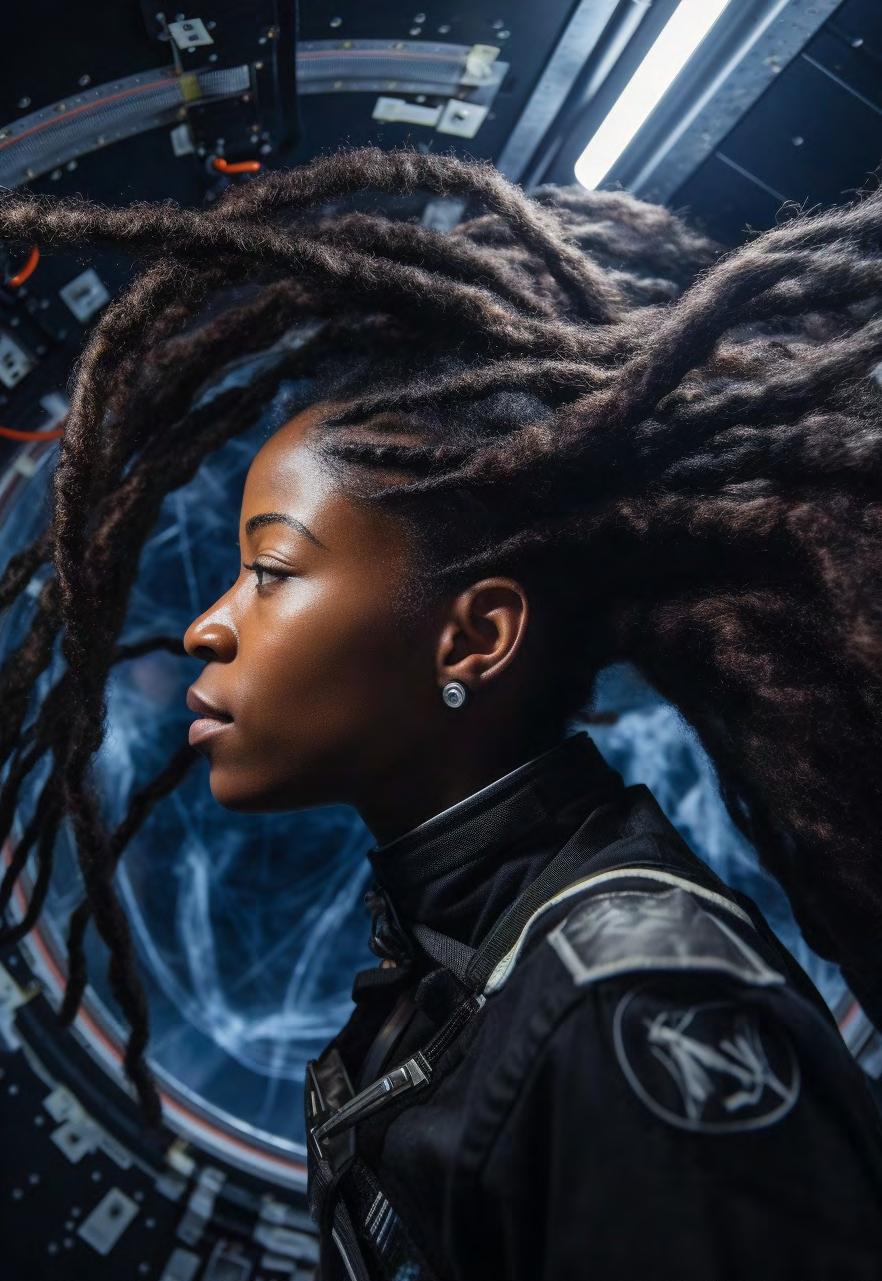
33
But first, let’s take a look back at important milestones in space flight history and the hairstyles that were fashionable for Black Americans at the same time.
First Black person in space: On April 12, 1985, Guion Bluford became the first Black person to travel to space aboard the Space Shuttle Challenger.
First American in space: On May 5, 1961, Alan Shepard became the first American to travel into space aboard the Freedom 7 spacecraft.
Hairstyle: The “conk” was a popular hairstyle for Black men, created by chemically straightening the hair and styling it in a pompadour.
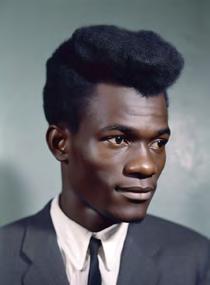
Hairstyle: Many Black women and men wore their hair in curly or wavy styles, such as Jheri Curls or S-Curls, often achieved through styling with curling irons or rollers, or through the use of permanents aka “perms” or texturizers. Hair attachments or extensions woven into a woman’s hair, a weave, was also fashionable.


First moon landing: On July 20, 1969, Neil Armstrong and Edwin “Buzz” Aldrin became the first humans to set foot on the moon during the Apollo 11 mission.
Hairstyle: The afro became a symbol of Black pride and identity, as well as a practical hairstyle for Black people who wanted to embrace their natural texture and protect their hair from damage.

34
1961 1969 1985 1960 1970 1980 1990
First Black woman in space: On September 12, 1992, Mae Jemison became the first Black woman to travel to space aboard the Space Shuttle Endeavour.
Hairstyle: 1992: Braids, twists, and locs became increasingly popular as Black women sought low-maintenance styles that could protect their hair and allow it to grow.

First Black person on the ISS : On April 7, 2021, Victor Glover became the first Black person of African descent to serve on the International Space Station (ISS).
Hairstyle: Natural hair continues to be popular among Black people, with many opting for styles that emphasize their hair curls, coils, and wisps, while protective styles like braids, twists, and dreadlocks remain popular choices.

The first Black person on the moon: On July 10 2025, Dr. Ava Williams, a NASA astronaut and expert in lunar geology, made history as the first Black person to walk on the moon as part of the Artemis program.
Hairstyle: Short , practical hairstyles like fades and buzz cuts are popular among Black men preparing for commercial space flights, as they are easy to maintain and do not interfere with the use of helmets and other equipment.
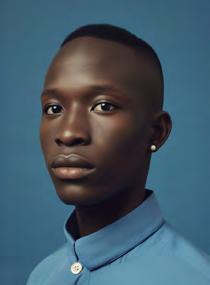
The first African American to fly aboard a non-governmental space station : Dr. Malik Johnson, a renowned physicist and entrepreneur, was the first person of color to fly aboard a commercial space station, the Alliance Kitagawa-Harrell (AKH), on April 7 2028.
Hairstyle: inspired by sci-fi films and popular culture, such as elaborate braids adorned with beads, jewels, or neon light accents aka effects, are all the rage among Black people preparing to travel to the moon.
35
1992 2021 2025 2028 2000 2010 2020 2030
Today the space companies have worked to ensure that equipment and facilities are designed to be accessible and inclusive of people from all different types of backgrounds and age groups. For instance, unlike in the early days of NASA, we have spacesuits that accommodate a range of body sizes and shapes, recognizing that not all astronauts have the same physical build, or range of motion. Additionally, hair care products and equipment designed specifically for people of color are now available on all space stations and aboard commercial space flights, acknowledging the unique hair care needs of today’s Black astronauts and consumers.
Overall, the space program in 2030 is committed to advancing diversity, equity, and inclusion for all, recognizing that these values are essential to achieving our shared missions and ensuring that space exploration benefits all of humanity.


Blak Akụkọ
Blak Akụkọ (spelled with the ụọ as the name is from the Nigerian Pidgin language, Blak Akụkọ meaning Black Space)
Blak Akụkọ is an outstanding new brand of very stylishly colorful and health conscious barrettes and combs; made specifically to combat “that space dryness” in pressurized environments as functional wearable devices. The barrettes are especially suited to treat root and hair dryness by releasing a specialized non-rinse moisturizer formulated for African hair textures based on the wearer’s personal health readings.
Blak Akụkọ was founded in 2027 by two sisters, Adeola and Ogechi Onyejekwe. Adeola, the older sister, had always been passionate about space travel and exploration. As a child, she dreamed of being an astronaut, but was discouraged by the lack of diversity in the field. Ogechi, the younger sister, was a talented stylist and had been experimenting with hair products since she was a teenager.
In 2025, Adeola attended a space conference where she met several Black astronauts who shared their experiences of struggling to care for their hair in space. Inspired by their stories, Adeola reached out to her sister Ogechi to see if they could create a solution.
They spent the next two years researching and developing a line of hair care products specifically for Black space travelers.
Their breakthrough came in the form of the “leave-in hair device,” which could monitor the health of hair in real-time and release the appropriate amount of moisturizer to prevent dryness. After several rounds of testing with Black astronauts, the sisters launched their company.
The brand quickly gained popularity among Black space travelers, who had long struggled to find hair care products that were effective in low gravity environments. In addition many business travelers in commercial airlines and the dry pressurized environments of planes also took to wearing the beautiful devices as a Black-Tech fashion statement. As the sisters continued to innovate, their company grew rapidly and was recently valued at $23 billion this year. Adeola and Ogechi remain owners and actively involved in the company, with Adeola serving as CEO and Ogechi as Chief Product Officer.
38

39
Blak Akụkọ has revolutionized hair care for black space travelers with their innovative line of wearable devices and monitors. The leave-in hair devices are specifically designed to combat “space dryness” in pressurized environments, and the barrettes and combs are both functional and stylish.

The devices work by monitoring the health of the hair in real-time and releasing the appropriate amount of moisturizer to combat dryness. This feature ensures that the hair remains healthy and well-moisturized in the harsh environment of space. The devices also come in a range of colors and styles, allowing travelers to express their individuality while taking care of their hair.
The moisturizer is formulated for African hair textures, and the barrettes and combs are made to cater to the unique needs of black hair. The devices and moisturizer are easy to use and are suitable for both men and women.
Overall, Blak Akụkọ has created an excellent line of hair care products that cater specifically to the needs of black space travelers. The wearable devices and monitors are innovative and effective, and the range of colors and styles ensures that travelers can maintain their individuality while taking care of their hair. We highly recommend this product line for anyone traveling to space.
40

41
From the company named after its founder, Avanti King, Avanti has released a new line of highly technical, yet easy to use new type of razor and clipper haircutting unit that will capture (vacuum) floating hair while it is being cut in weightless environments and then compress the hair trimmings into protein- and nitrate-rich pellets for fertilizing personal food gardens in space.
Born in Richmond, California but raised in Paris, France, Avanti King, the founder of the Avanti brand of fashion and urban streetwear, was always fascinated by space exploration and the advancements being made in the industry. After meeting the famous Dr. Malik Johnson, who had just returned from his trip to space in 2028, Avanti was inspired to bring his talents to innovate on the fashion needs in space.
Avanti’s new line of clipper haircutting units, which capture floating hair in weightless environments and compress them into protein and nitrate rich pellets for fertilizing personal food gardens in space, is a unique innovation. The clippers are available in three sizes and types - the Espresso, the Marcus Noir, and the Obsidian Blade.
The Espresso is the smallest of the clippers, designed for precision cuts and intricate styles. It fits comfortably in the hand, and its sleek design allows for easy maneuvering in tight spaces.
The Marcus Noir is the mid-size clipper, perfect for standard haircuts and maintenance. It features a lightweight body and a comfortable grip, making it easy to use for extended periods.
The Obsidian Blade is the largest of the clippers, built for heavy-duty use and thick hair. Its robust body and powerful motor make it the go-to choice for those on moon travel and expecting to cut the hair of others on extended stays.
All three clippers feature Avanti’s signature design, with a sleek black body and metallic accents. The clippers’ sharp blades ensure a smooth, clean cut every time, and the vacuum technology prevents hair from floating into ventilation systems in weightlessness.
Avanti’s new line of razor and clipper units is a solution to the issue of floating hair in weightless environments. Not only highly technical and efficient but also sleek and stylish in design, Avanti’s innovative technologies make keeping a clean fade or beard-trim in space even easier than on Earth.
Avanti 42


43
Sean O’Connor
Now considered an elder statesman and pioneer, Sean has had a career of breaking new ground in the field of design. Since the early 2020s, he has spent much of his career as a Senior User Experience Designer at Blue Origin, Jeff Bezos’ rocket ship company, designing software used in the manufacturing of space flight vehicles. In 2023 he was honored by the Computer Science Museum of Silicon Valley exhibition of his work in co-building the first website in the world to focus on afrocentric culture. He has been a guest lecturer at California Polytechnic and UC Berkeley, as well as spoken at conferences in London and Berlin. Over the years he has shown a great passion for mentoring students, and regularly provides guidance at Stanford University on Systems Thinking and Design, to this day. In addition to his many patents in the field of AI and the internet of things, Sean is now of course best known as a painter and pop-icon; with his large scale abstract art pieces exploring the interplay between AI and robotics and the traditionally human relationship of teacher and apprentice. He is slated to produce another one of his massive abstract works of art by using the earth’s aurora borealis and magnetic field for what he calls his “cosmic canvas” in 2034.

44

45
Reshaped body
As a designer and with a profound interest in tackling the challenges presented by life beyond Earth’s atmosphere, I have had the privilege of collaborating with distinguished scientists from diverse fields in my studio. As the leader, I spearheaded the effort to create a proficient cross-disciplinary team, capable of addressing the complexities of space exploration. Together, we explore innovative solutions to adapt the human body for the extreme conditions of space travel, integrating the necessities of space living, while reimagining beauty standards.
Our team has the remarkable opportunity to work in two labs – the Phygital Body Experience Lab situated in Tokyo on Earth and the other located on the Orbital Reef, a space station in low Earth orbit. Both labs boast cutting-edge machinery, such as stem cell and synthetic skin printers, conductive thread knitters, thermo -
formers, portable laser cutters, and smart material weavers. Our concept room serves as a hub for our brainstorming and prototyping activities, displaying an array of evolving sculptures, sketches, and designs, as well as VR glasses and AR gloves, as we strive to develop innovative solutions for adapting human life to the rigors of space exploration. Despite the distance between our two labs, we are able to prototype and test our designs with the help of these advanced machines, enabling us to develop and refine solutions that will withstand the challenges of space travel.
Our studio is an innovative hub where we merge fashion and industrial design with medicine, molecular biology, chemistry, psychology, and cognitive science to create clothing that acts as a second skin, tailored specifically for life beyond Earth’s atmosphere.
46
Iga Węglińska
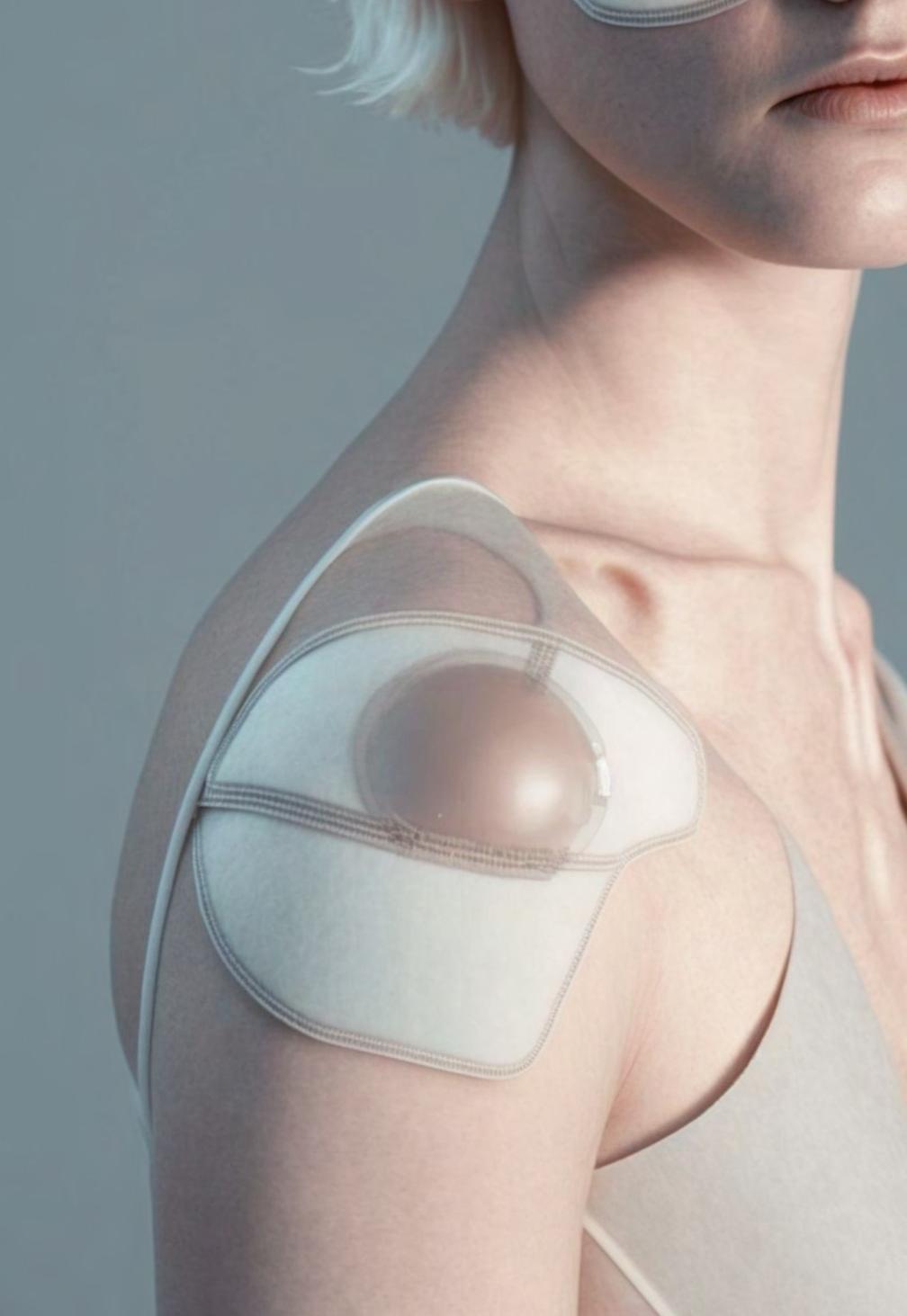
47
One of our joint projects involves the development of dissolvable subcutaneous implants. These strategically designed inserts help counteract passive body positions experienced during space travel, as well as redefine beauty standards both in space and on Earth.

Imagine living in a world where the force of gravity is not a constant, and the air pressure around you is always changing. Space travel is exciting, but it can take a toll on the human body. My team and I have developed an innovative solution to combat the negative effects of weightlessness and variable pressure on space travelers. Our inflatable compression garments are designed to not only improve blood circulation, influenced by the varying pressure during travel, but also provide physical comfort that can have a soothing effect on our mental well-being.
In addition to our work on inflatable compression garments, we also collaborate on the creation of e-kinesiology tapes that gently stimulate muscles and skin tissue, simulating the effects of gravity on Earth. Our team contributes their expertise to ensure that these tapes are effective and comfortable for extended spaceflights. With our combined efforts, we strive to make space travel safer and more comfortable for future explorers beyond Earth’s atmosphere.
48

Living in outer space can be a sensory deprivation experience, with the constant drone of electronic noise and the absence of natural scenery leading to a range of health concerns from hearing and concentration problems to vision deterioration. One of our recent collaborations involves e-tattoos and biosensors designed to help space travelers monitor their mental and physical well-being. Our team of biomedical engineers and computer scientists contribute their knowledge and skills to develop devices that track vital signs and environmental factors, such as sleep quality and noise exposure, in real time.
Lastly, we’ve teamed up with experts in skin care and optics to develop solutions for maintaining healthy skin in space. Our glowing self-adhesive pads made of medical silicone and luminous optic fibers implanted subdermally mimic sunlight, stimulating vitamin D production and providing hydration and nourishment to the skin. We’ve also integrated technology that delivers vital nutrients, medications, and vitamins directly to the body, as indicated by biosensors.
As we continue to push the boundaries of human space exploration, our interdisciplinary team remains at the forefront of designing for the challenges and opportunities that living beyond Earth presents. Together, we are pioneering a future where space travelers experience not only a high quality of life beyond Earth but also an embodied experience that transcends the cosmos. As wnot only a high quality of life be

50

51
Iga Węglińska is a prosthetic-clothing designer specialized in HCI and alternative human skins. She is a distinguished professor and lead designer at the Phygital Body Experience Lab in Tokyo, and her works have been exhibited at prestigious venues such as MoMA, the V&A Museum, and the MET Museum. Back in 2023, with her PhD in human-garment interactions, she worked as the head of the Fashion Design Studio at Academy of Art in Szczecin. As a multidisciplinary designer and researcher specialized in fashion-tech and smart materials, her work was focused on the topic of sensory substitution and augmentation. Her designs, which center on the theme of sensory substitution and augmentation, have been featured in publications including Dezeen, Designboom, Fast Company, Vogue Italia, LS:N The Future Laboratory, and WGSN. In recent years, she has expanded her research towards the sense of the body in the metaverse. Consequently, she became one of the leaders in prosthetic-clothing enabling an immersive multisensory body experience in physical and digital reality.

52
Iga Węglińska

53
Cos(met)ics
Revolutionizing Beauty and Protection on Earth
By Magda Mojsiejuk
In a world where innovation knows no bounds, the marriage of beauty and science has given birth to a groundbreaking invention: makeup that not only enhances one’s natural beauty, but also offers vital protection from the sun’s harmful radiation. Initially developed for astronauts exposed to cosmic radiation in space, this shiny makeup has taken the beauty industry by storm, proving indispensable for those living in hot climates.
Cos(met)ics, as it’s aptly named, is a line of cosmetics that offers the perfect blend of style and safety, utilizing cutting-edge technology to shield the skin from the sun’s damaging ultraviolet (UV) rays. Packed with a powerful combination of antioxidants, broad-spectrum SPF protection, and radiation-reflecting nanoparticles, this makeup line is nothing short of a revolution in skin protection.
From its humble beginnings as an essential tool for astronauts, Cos(met) ics has quickly gained traction among those living in sun-drenched locations, where the risks of sunburn, premature aging, and skin cancer are all too real. This cosmic makeup offers a fashionable and practical solution, empowering people to safeguard their skin while looking their best.
As climate change continues to make headlines, Cos(met)ics serves as a reminder that orbital innovation can make a difference in our everyday lives. It not only transforms the way we approach beauty and self-expression, but also sets a new standard for protection, proving that science and style can coexist in harmony.
54

55

56

57



58

59
Metaverse before Universe
By Cortney Harding
The trope of the lonely astronaut, disconnected from reality as he hurdles through space, is not just a fictional creation. Space travel is a fundamentally solitary endeavor, and even those who travel with other astronauts are cut off from most of their friends and family down here on the blue planet. The Metaverse brings us ever more options for messaging and staying connected than there were at the dawn of the Second Space Race, no longer mediated by 2D screens and dropped connections. Our reporter Cortney Harding checked them out first-hand.
XR lets you know before you go
Before you’ve sold your favorite ski cabin or some vintage NFTrees to pay for a 2-week trip to orbit – or you decide to leave your life and migrate to Mars - you should know in advance that you really want to go.
At SpaceXR, you can spend time in a simulation of the spacecraft you’ll be in for several weeks, months, or even years. Throughout my week in virtual space, I got behind-thescenes look at one of the industry’s best-rated facilities. The founder and former Starship pilot, Anna-Maria Tolle, showed us her company’s metaverse, and as more people start taking the leap into the great beyond, we’ll see this technology deployed in increasingly interesting ways.
“NASA was one of the first users of XR to train astronauts,” Anna-Maria told me, “building simulations that allowed them to practice repairing parts of spacecraft, and later training for the extreme conditions they’re currently experiencing on the moon and Mars. Now, even people with no intention of going Up There use XR fitness programs designed for long missions, to make their in-home workouts more fun and immersive.
As more people head for the stars, XR and the metaverse will help keep them closer to Earth
60
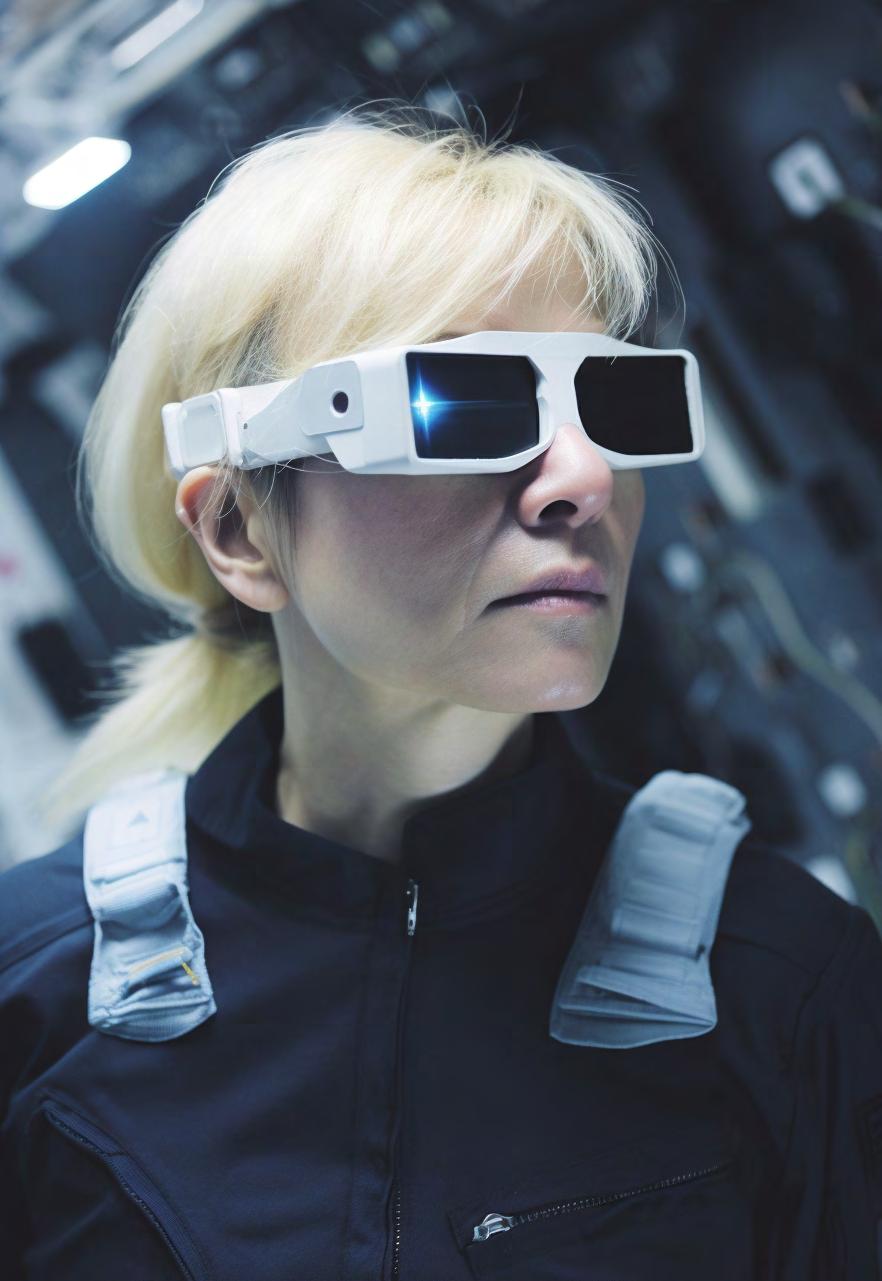
61
But those two use cases are really just the tip of the iceberg when it comes to potential future deployments.”
We’ve all seen the TikToks where a new celebrity space traveler is preparing for flight. She explained, “Those short videos don’t really capture the sense of time you feel in a simulation of the spacecraft you’ll be in for the next several weeks/months/years. The first piece would just be building familiarity with the space – how small it is, the darkness, the inability to go outside and take a walk around the block. These are all vast changes from the way most people live their lives, and take a long time to get used to. NASA and other space agencies could build physical versions of this, sure – but XR solves a lot of the problems related to this. For example, if you build a replica of a spacecraft in real life, it costs a lot more than building it in a game engine, and many more people can be in the game engine than can be in the replica physically. You also don’t have to travel to spend time in the replica, and you can spend as much time in the headset as you want; with the physical replica, eventually the building housing it has to close and the cleaning crew has to come in and disrupt the trainees. Spending time in a space in XR is also so immersive that it creates a strong sense of memory – this is why XR has been so successful in helping veterans cope with PTSD.”
A vaccine for Vacuum Sickness
Speaking of PTSD, nobody can forget some of the people whose lifelong aspiration to visit space didn’t go as beautifully as they had hoped. Even safely in a ship or suit, the mental shock of touching the void can cause a violent case of “vacuum sickness” - the opposite of the tranquil Overview Effect. Anna-Maria took hundreds of the first-time flyers up in the late 2020s, and she saw firsthand the things that can go wrong when people fail to prepare for orbital tourism.
“You will literally lose your lunch, or your mind, on a spacewalk. I had this one client who was an experienced scuba diver, I mean very experienced nitrox deep sea diver. Bragged about how many hours he’d been underwater, could float upside down in a drysuit to look under a coral ledge and not feel the least bit sick. Well, he literally ruined a $300,000 space suit out there. Makes it very hard to see out of the visor. He was unconscious when they brought him back inside. You do not want to be that guy.”
“But that’s not even the worst. Another client, she was a skydiver, third generation. Literally skydiving since she was 9 (her mom got some jail time for that). Claimed she was genetically immune to acrophobia. Also atheist, which is gutsy for a skydiver. Well, out on her spacewalk she wants to go untethered. Apparently in skydiving there’s a tethered option which means you only freefall for a few seconds, and she thought that was for chumps. But when the airlock opens and she is standing on the edge of the Axiom, she starts screaming. And screaming. No stopping. They pull her back in. Still screaming. Out of the suit, which takes 30 minutes when the wearer is helping. Back to the room. Screaming. Finally she passes out. Spends the rest of the trip in her room, creating Midjourney synthographs and GPT-8 texts. Founds a cult when she lands that now has 7000 followers.”
62

63
As the training continues, more elements can be introduced. SpaceXR goes beyond headsets, using mouth and body haptics and a neural interface to induce a much broader range of senses and even emotions than mere visual and auditory stimulation can provide. Haptic suits, for example, can simulate what it feels like in certain conditions, so that there won’t be any surprises once someone is up in the atmosphere. Heat, cold, and wind can also be utilized to create a more realistic experience when someone is in the headset.
The user can also spend time in the headset with their crewmates to experience a version of what their time together will be like and nip any potential problems in the bud before they start. After all, better to have a conversation about someone’s annoying habits when it’s the two of you as avatars in your living rooms as opposed to when you’re a few miles up in space.
Avoiding agoralgia with a taste of home
Most important, Anne-Marie said, is XR’s role beyond orbit, where we get into the exact opposite need: rather than simulating space while you’re on earth, you want to experience earth while you are in space.
“Spaceships are big, but they’re small inside. Most people get something that’s not claustrophobia or agoraphobia, because it’s not fear; just an ennui. As nostalgia is the longing for the past, agoralgia is longing for open spaces. At the same time, space is unfathomably enormous, and that freaks people out sometimes. It’s one thing to be looking out the window of your orbital hotel or stratoballoon and feel the majesty of the blue globe beneath you.
But a couple of days out of orbit on the way to Mars, earth is a Pale Blue Dot you need help to even see. At that point, it is night sky in every direction for the next three to six months, which is only fine if you grew up in Svalbard. For most humans, half a year of no days is not survivable. And that’s not even the hardest part. The hardest part is when the size of the universe smacks you. You need XR and some Gabatine combination to feel back in a cozy room, a copse of trees… you want walls.”
That’s why, once a traveler has gone through all their Earthbound training, they’ll head for space with a metaverse enabled device in tow. In addition to the spatial component, they’re used for digital synaesthesia, spanning taste, texture, scent, and other senses. “With instant commerce, we’ve all gotten used to the idea that we can have any food we want - those noodles from that stall in Macau, delivered to surprise your spouse on her birthday - from any place on earth before it’s even cold. But in space, nobody can hear you screaming for comfort food.”
SpaceXR worked with Bompas and Parr on digital devices to augment the still-limited menus available on longterm missions.
64
“But in space, nobody can hear you screaming for comfort food.”

65
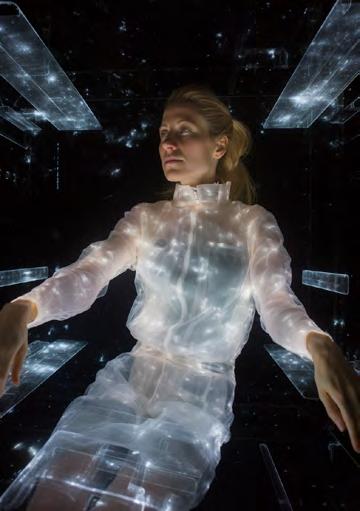
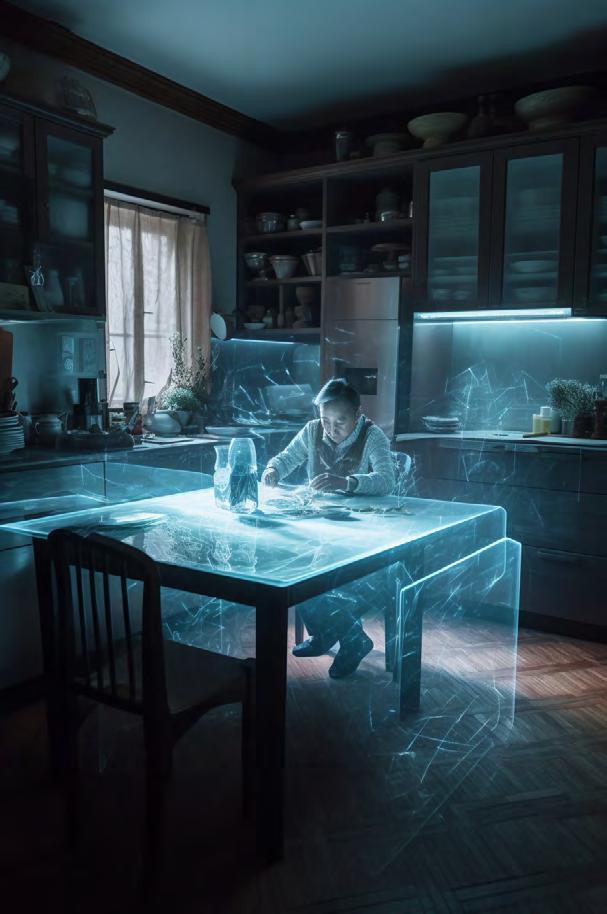

66
Connecting across the cosmos
We conclude our tour with the toughest and most obvious use case –connecting with those back on Earth in the metaverse. After you leave, all of a sudden, you can no longer “interact” with your loved ones – not just seeing them on a screen but interacting with them in 3D. As we all know, it really does create a deeper connection.
“When I started flying for SpaceX, I traveled a ton for work, and I used to have Zoom chats with my kids every night before bed. It was fine, but it still felt removed and isolated. I got XR headsets for my entire family and shifted those nightly calls into a virtual space where we played ping-pong with the kids and chatted about their days, and instantly the vibe shifted. The kids were more engaged and present and the conversational flow was less stilted. It’s not a scientific sample by any means, but we felt like we missed each other less, because it felt like we were together in the metaverse every night.”
The impact this will have on loneliness and mental health among those in space will be massive. Knowing you won’t see family and friends for months or more is extremely difficult – this gives people the comfort of knowing that while they cannot be physically present, then can at least be emotionally connected. But there’s a big problem as you leave Earth farther behind, when an augmented, intelligent avatar is needed.
“The biggest thing everyone misses in space is everyone who is not in space with them. And beyond orbit, you can’t just pop on a headset and chat with grandma or your kids. When Mars and Earth are at their closest, there’s a several-minute delay due to the time it takes for signals to travel; and it’s half an hour when they’re farthest apart. So you can’t really have a live conversation. The metaverse means you can have a nearly-perfect facsimile of a conversation with your loved one’s avatar, and they can with yours.”
The week in SpaceXR changed me, even though I hadn’t left earth. I admit, I tried to avoid news of earth while I was in their metaverse - so coming out and back to the climate chaos that’s not yet under control made me long for my crewmates and controlled space.
And this goes beyond just connecting with people. When we leave Earth, we leave behind everything known and familiar to us, and that creates a profound sense of loss and discomfort. Even if we know we will return at some point, we can still be homesick for all the little things – a favorite room in the house, a coffee shop where we spend time with friends, a town square. Astronauts could take photos and videos with them in the past, but those seem to only enhance how far away that beloved place is. But now, those spots can be rebuilt in the metaverse, and the user can spend as much time there as they need.
Space travel right now is limited to those who are highly trained and a tiny select few who are insanely wealthy. But at some point, the barrier to entry will come down, and there might even be a point in the future where we have to leave planet Earth because it has become uninhabitable.
67
If that happens, we can use the metaverse to at least mitigate some of the trauma that comes with leaving your home behind. We can build memory palaces that not only capture the current reality, but all our past lives as well. I’ve been playing with recreating a version of the mall near my hometown in the metaverse, and doing it from memory rather than looking up what store was where. I will likely get many things wrong, but I want to recreate this particular memory palace based on my own thoughts. And of course, if a classmate of mine remembers things differently, they can create their own version of past reality.
Of course, there are limits to this. Recreating a childhood mall is a fun lark; recreating a town that has been destroyed by conflict or climate change is a much more serious undertaking. And if a metaverse is going to be the official record-keeping metaverse of a time or place, there needs to be some agreement about what was actually there. And there are issues of consent if you want to start adding people to the mix – already people have used the metaverse to create worlds where loved ones are still alive. This can be comforting in a time of grief and loss, but spending too much time in an alternate universe while denying reality can have profound effects on mental health and healing.
All of this will come in the distant future, and in the case of having to flee Earth for a planet we haven’t destroyed, hopefully will never come to pass. Still, it is worth thinking about the broader ramifications of this technology and how it will impact every facet of our lives. In the short term, those of us who plan on heading to the stars should be making sure to pack XR headsets alongside space suits and helmets.
Cortney Harding
In 2030, after having visited 100 countries and becoming one of the leading experts on the metaverse, Cortney Harding became the first woman to enter the metaverse from the International Space Station. Her journey to space started in 2023, when she was visiting her 68th country and preparing to give talks on the metaverse at University of Michigan and Yale, she wrote a piece about space travel and the metaverse. NASA saw the piece and they started working on an initiative to bring the metaverse into the next realm. She is proud to represent her agency, Friends With Holograms, on this journey.
68
Fitness has evolved beyond our wildest dreams. Gone are the days when people would simply hit the gym for a workout session, as space-age technology has brought forth a new era of fitness trends. Exoskeletons, virtual reality (VR) training, and resistance tracksuits, initially designed to help astronauts maintain their muscle mass while in orbit, have now become the latest craze on Earth. Let’s dive into these innovative fitness solutions and explore how they’re revolutionizing the way we stay fit and healthy.

XRersize
69
Exoskeleton technology has come a long way since its inception. Initially designed to assist those with mobility issues and help astronauts counter the effects of microgravity, exoskeletons have now become a sought-after tool for fitness enthusiasts. These wearable robotic devices provide users with increased strength, endurance, and agility, enabling them to push their limits and achieve new fitness milestones.

In addition to helping users lift heavier weights and perform more challenging workouts, exoskeletons also offer injury prevention and rehabilitation benefits.
By providing support and stability to the body, these cutting-edge devices minimize the risk of injury and facilitate a faster recovery for those nursing injuries or post-surgery.
Virtual reality has opened up a new world of fitness possibilities, allowing users to immerse themselves in engaging and interactive workout experiences. VR training offers an endless variety of workout environments and scenarios, from climbing Mount Everest to cycling through picturesque landscapes or participating in high-intensity dance classes.
This technology is not just about providing visually appealing backdrops; it also incorporates real-time biometric data to personalize workouts and ensure users get the most out of their sessions. Moreover, VR training eliminates the need for physical gym space, making fitness more accessible and convenient for everyone.

71
Resistance tracksuits , originally designed for astronauts to maintain their muscle mass while in orbit, are now a trendy fitness solution on Earth. These innovative garments are equipped with built-in resistance bands and strategically placed weights, creating a continuous challenge for the wearer during any activity.
These tracksuits not only add an extra layer of intensity to standard workouts but also transform everyday activities into calorie-burning, muscle-building opportunities. The versatility of resistance tracksuits makes them suitable for a wide range of users, from professional athletes to office workers seeking to stay active during the day.

Exoskeletons, VR training, and resistance tracksuits are revolutionizing the way we approach fitness, making it more engaging, accessible, and effective than ever before. As these technologies continue to evolve and become more widely available, we can expect a future where staying fit and healthy is not just a goal but a thrilling and immersive experience. So, gear up and embrace the future of fitness, where the only limit is your imagination!

73
Taking a Bite out of Space
Good food, and good eating, are more often than not the product of good old-fashioned home cooking. The subtle sound of gaslit flames on a 20-year-old stove top, steam flowing from the sides of the infamous pot whose lineage can be traced down from generation to generation like the DNA of a family tree. The aromatics of your mother’s favourite spices flowing through the air as you longingly wait for the food to be served on the oak wood dining table that will outlive us all, marked by time, scuffs and scratches running along its grain.
Yes, home cooking really is a mystical marvel and makes one question if there really is a reason to seek food anywhere else. Though a traveller like myself will tell you that eating out should not be simply a way to get out of the house or see friends, but an opportunity to experience the home cooking of others, and their culture.
Transcending across the globe and sitting at the tables that other fortunate children sat at as their mothers fed them the homecooked meals that their mothers before them had once prepared. From Japan to Portugal, Italy to Armenia, travelling right is the key to good food and good eating.
It is my wanderlust for culture and cuisine that has inevitably led me to the furthest table from my own, the fantastical La Raspelière, a temporary French bistro located in the quickly developing low-earth orbit zone. The restaurant will only be operational for a single month before closing its airlocks for good, part of the farewell celebrations planned for the ultimate but timely demise of the International Space Station (ISS), which will cease to exist a week from now after disintegrating into the South Pacific Ocean.
74
Dan Silveira

75
A poetic end for a hunk of metal that stood for the scientific accomplishments of Earth and a beacon of hope for humanity.
The name of the restaurant couldn’t be more accurate, the entire time I was in La Raspelière, I felt as if the gray hairs on my head regenerated their pigment as I spiritually travelled back to my grandmother’s kitchen as a young boy, tasting her famous stew off her wooden spoon for the very first time. The theme of the menu couldn’t be more poignant as it aimed to represent the past, present and future of culture and cuisine. Mixing old techniques, with new ingredients, and old techniques with new ingredients, an array of recipes meant to be eaten in space. I am embarrassed to admit my eyes welled up at the thought of a future Martian one day serving one of these dishes at her bright red dining table for her delightful and energetic grandchildren.
Each table in La Raspelière had a fitted culturian exo-garden at its centre that naturally grew our salad of microgreens and mushrooms. I must admit, something about harvesting your own salad provides a clever balance and contrast of Earth and space. The waiter then came by and placed a light and fluffy puff of space-grown algae, sprinkled with currant berries to perfectly combine and reinforce the idea of the old and new.
The second course arrived as a floating jiggling and somewhat comedic bubble of vegetable soup. It was purely liquified and packed with enough flavour to launch a paper airplane into orbit. When it arrived, I must admit I had no idea what to do with it or how to consume it, when the waiter pointed to an electrically heated metal straw that lay next to my plate which I originally mistook as a space decorative piece.
The soup, which hovered in front of me, could not maintain its temperature suspended as it was. But as it travelled through my straw it heated up to the perfect temperature before entering my mouth. The interaction and experience paired beautifully with the earthy flavourful liquid, although it took all my focus and care to not end up with a face full of it.
The main course, a 3D printed Kobe beef steak, cooked medium-rare and served with a side of hydroponic vegetables and a bag of Bordeaux wine - a sin if served anywhere else, was sent to the ISS from France in 2027 and has since then aged in space for the sole purpose of being served during this once-in-a-lifetime-experience. The thoughtful planning and approach to each component of this dish were not lost on me, and the flavours were undescribably unique, with hints of smoke, oak and maple resonating throughout.
As I reached the final course, I was thankful for the weightlessness perk of being in space as I for sure had eaten my share. The waiter returned one final time with a bowl of French vanilla ice cream whipped with a machine that combined liquid and air to form just the right consistency; and placed on top, a single cherry-shaped glass candy, a simple but unforgettable end to a remarkable meal.
76
“A poetic end for a hunk of metal that stood for the scientific accomplishments of Earth and a beacon of hope for humanity. ”


77
It was at this moment that I stopped and looked around and noticed all the joyous smiles that spread across each and everyone’s faces, both of those eating and serving the orbital cuisine. I originally came here to determine what of our food and culture would translate to space, however, I was shocked to discover we were creating something new here, together. A month-long evolution, catered by La Raspelière, the best of earth and fitted for space.
Having now travelled to the furthest point possible to experience a oncein-a-lifetime restaurant, I leave you with this. Travel close, travel far, whichever you choose to do, just make sure to take the time to really look and really feel. People and culture are all we have in this ever expanding void that is sprinkled with rocks and stars, so grab a seat, a fork, a knife, and try someone else’s food.
Dan Silveira
It was only 7 years ago, back in 2023, that Dan was a Service & Experience Design Consultant at IBM’s iX Consulting firm, a Course Director at York University, and a writer publishing pieces on design, strategic foresight, and his fictional work writing and creating graphic novels. Now, in 2030, Dan is a Design Consultant Partner, continuing to teach at Toronto’s biggest university, and has published several award-winning graphic novels that each focus on a different aspect of the human condition. Those interested in Dan’s work can attend one of his talks at the design and foresight conventions he speaks at annually.
78

79
NutriOrbs
Tang, tube food, and freeze-dried ice cream were the iconic, and icky, original orbital edibles. Humans need fruit as part of a healthy, tasty, well-balanced diet. James Lind found in 1748 that citrus fruits prevented his sailors from getting scurvy - hence the sailor nickname “Limey”. But fruits spoil too quickly and grow too slowly to survive even the speedy 80-day firstclass SpaceX Starship cruises to Mars; much less the more affordable 150 day transits. Whatever is eaten needs to be recycled into edible food again, as fast as the processors can cycle them (slower cycles mean more food matter is dead weight).
We take a look at flavorful faux fruits that may help thousands of space travellers make the three- to sixmonth journey sans space scurvy. And could take a bite out of Earth’s $8 billion functional food industry.
By Magda Mojsiejuk
As humanity ventures into the cosmos, maintaining good health and relishing delectable meals become crucial for our courageous space travelers. Developed by the Spanish Space Agency (AEE), NutriOrb is an innovative fruit substitute that aims to revolutionize dining experiences during extended space missions while ensuring optimal nutrition.
Spain, the largest citrus producer in Europe, has now extended its expertise to the realm of space nutrition. Featuring a cellulose-printed skin, NutriOrb emulates the texture of genuine fruits and berries. The gel interiors are infused with flavors, vitamins, and soluble fiber for a delightful and satisfying bite. Astronauts can now enjoy the comforts of home while preserving their well-being in the infinite expanse of space.
80
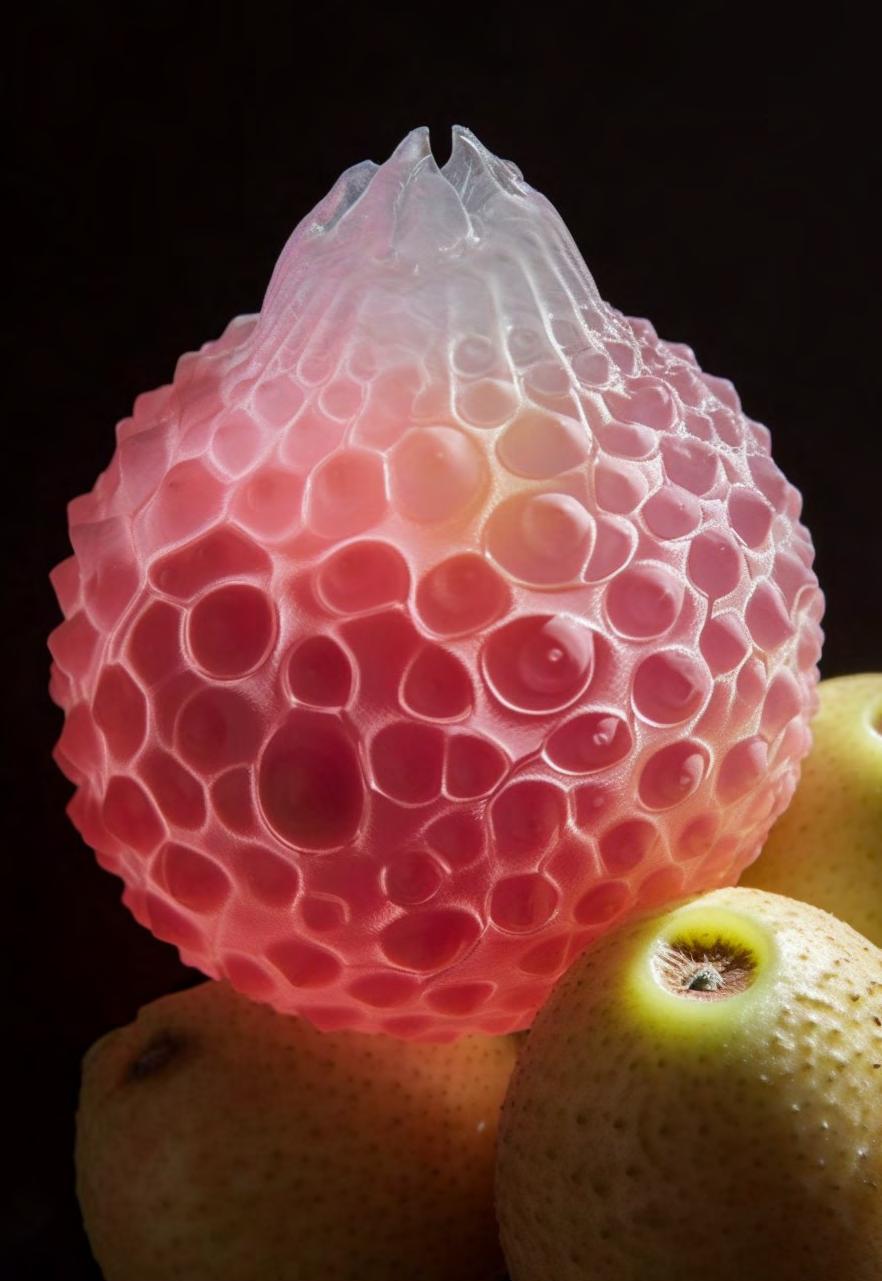
81
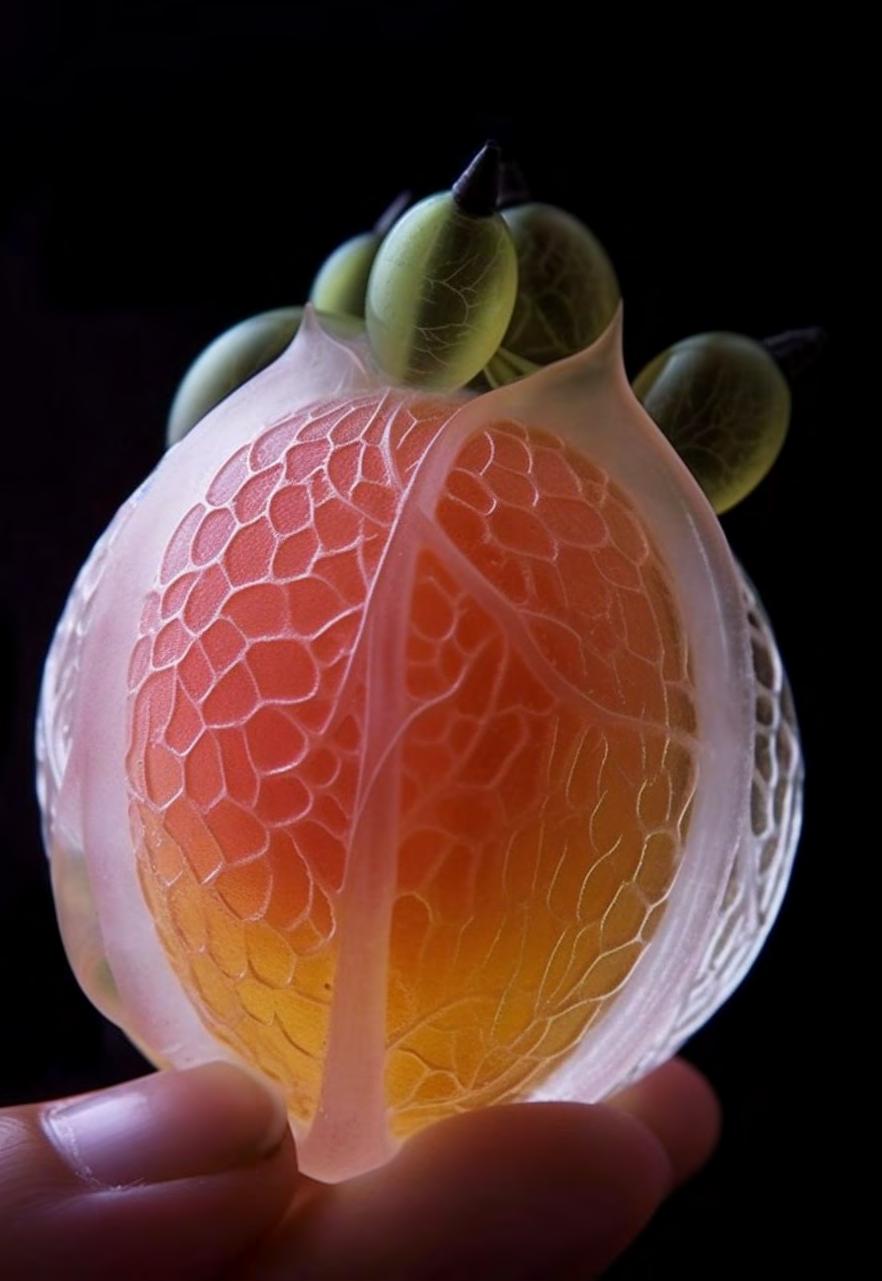
The true magic of NutriOrb resides in its on-demand printing capabilities. Using specialized equipment that merges gels and fibers, astronauts can create a wide variety of tailor-made fruit substitutes to suit their unique needs and tastes.

NutriOrb’s potential, however, extends beyond space travel; it is set to revolutionize how we approach personalized vitamin supplementation right here on Earth. Delectable and customizable, these fruit and berry substitutes present a refreshing alternative to traditional supplements, making nutrition an enjoyable experience for all. As suitable climates vanish, NutriOrb provides a remarkable reminder of flavors we may soon lose to climate crime.
As our exploration of the universe continues and we push the boundaries of human potential, NutriOrb ushers in a new epoch of sustainable and delightful dining experiences, both beyond Earth’s atmosphere and in our daily lives. Prepare to embark on an interstellar taste journey with NutriOrb, the perfect fusion of nutrition, innovation, and indulgence, proudly brought to you by the leading citrus producer in Europe!
83

84

85
Cooking off-earth cuisine
In this issue, we feature an exciting recipe from Laila Snevele, who introduces some of her innovative culinary creations.
Laila has been a food designer since 2018, beginning with her project “Digital Seasoning,” where she experimented with human-food-machine interactions and augmentation. Since then, she has continually explored the boundaries between artificial and natural elements in food. As soon as generative AI became publicly available, Laila delved into its potential for gastronomy.
Now, Laila plays a vital role as a sensorial translator for machines and AIChefster.
InTENSE is thrilled to present an exclusive recipe for three foods originally designed for space and now available at suppliers near you.
By Laila Snevele
Designed for space and now available at suppliers near you.
86
The Solarburst Fruit
The Solarburst Fruit is a fresh fruit that can be enjoyed raw.
The fruit features a thin, smooth edible skin and a juicy, sweet interior with a crunchy texture.
The interior texture is reminiscent of ripe watermelon—soft, juicy, and crunchy. When bitten into, it releases a vibrant citrus aroma that fills the room, making it ideal for closed spaces such as spaceships, stations, and bases. They provide travelers with a boost of vitamins and micronutrients.
This fruit is cultivated using cellular agriculture, meaning it doesn’t grow on a plant but instead develops within special membranes in a laboratory setting.

Perfect for:
A handful will not only fight off scurvy away, but their powerful aroma cuts through prevalent condition in microgravity: clogged sinuses, giving the sensorial hit needed to stimulate appetite.
Cosmic Bites
Cosmic Bites are a protein source that can be enjoyed cooked.
Cosmic bites are grown into compact structures that can be easily divided into smaller pieces without using tools, but also can be enjoyed as a whole protein structure.
Cosmic Bites are a savory and satisfying protein source that is rich in umami taste and packed with essential nutrients. The umami aroma deliciously brings together grilled meat, mycelium and roasted seaweed notes.
They are made using cellular agriculture techniques to produce muscle tissue, which can be combined with plant-based ingredients, like Stellar Greens, to create a nutritionally balanced product.

The cells are grown in the lab and provided with a nutrient-rich growth medium, which contains all the necessary nutrients and amino acids. The growth medium is kept at a constant temperature of 37°C, which simulates the temperature inside an animal’s body.
Perfect for:
Cosmic Bites are designed to get an even richer umami taste profile, with the low-sound flavor enhancement of Laila’s seasoning playlists.
88
Stellar Greens
Stellar Greens are fresh leafy greens that can be enjoyed raw or cooked.
The thick, tender leaves are delightful to chew when raw and become slightly softer when cooked. The fresh green aroma transports you to a lush spring day in the forest.
The leaves are tender with a slightly fibrous texture, adding an interesting mouthfeel.
They have a mild, somewhat sweet taste accompanied by a subtle bitterness typical of green leafy vegetables. Stellar Greens were engineered not only to have stellar taste, but also sound - the perfect crunch that will scratch the itch for unhealthy snacks. Soon we’ll have forgotten why potato chips were so popular at the turn of the century.
Stellar Greens are cultivated using an aeroponic system, where the plants’ roots are suspended in the air and misted with nutrient-rich water. The slightly chewy texture of the leaves ensures the necessary jaw movement for overall health.

Perfect for:
Source of microbiomially-optimized fiber; one cup can already fulfill your recommended daily intake.
89
Preparation
Recipe for 3 people
Preparation time: 34 earth standard minutes (45 if you are in zero G conditions) tools needed: omnifrier fryer, juicer, (Zero G) oven
Ingredients:
• 6 Solarburst Fruits
• 18 Stellar Greens leaves
• 3 Portions of Cosmic Bites
• Sodium chloride
• Available dry herbs or microgreens
• Umami audio seasoning by Laila
Snevele
Steps:
• Heat the (Zero G) oven to 180 o C
• Evenly distribute the Cosmic Bites on the tray
• Season with sodium chloride
• Place in the (Zero G) oven for 5 (9) earth standard minutes
• Meanwhile separate the Stellar Greens and pluck smaller leaves following the long fibers
• Place them in the omnifrier fryer until crisp on the outside and chewy like beef jerky on the inside
• Turn on the juicer and juice 6 Solarburst Fruits
• Save the fibers for the next meal. Use the juices for serving
Serving:
We recommend using Gravity Sphere Plates- this popping dishware was designed to bring space hospitality experience to our homes.
Fill each plate till the line with Solarburst Fruit juice, and arrange Stellar Greens on top of the liquid - top with Cosmic Bites from the oven.
Sprinkle with dried herbs or microgreens if available for visual detail and nutrient diversity.
Play umami seasoning in the background.
Enjoy a sweet and savory dish that gives a bite of chewy greens, soft umami bites, and a sweet citrus aroma that brings the complexity of the dish together, covers your nutritional needs and takes your eating experience out of this world.
90


91
For everyone and art
By Mark Bünger
Miki explained that her interest in this topic began when she was a 15 year old schoolgirl in her native Japan, and entered an art contest that offered the chance for the winning drawing to be sent to space with the first Japanese astronaut. Her drawing was chosen, and she received a plaque and certificate to commemorate the occasion. As a result, her name was added to the database of the Japanese space agency, and she was inadvertently invited to attend the Asia-Pacific International Space Year (ISY) summit Asia-Pacific space summit near her school. Despite being only 15 years old and in school uniform, Miki attended the conference and had the opportunity to meet the astronaut who brought her drawing to space. This experience sparked Miki’s passions for science and for art, which led to her position as a Commercial Innovation Manager for the International Space Station National Laboratory and becoming
a design lecturer at Stanford’s prestigious d.school. Her classes there, especially Planetary Citizenship, and collaborations with leading art galleries and musicians, have seeded many of the ideas and individuals behind the scientific and cultural renaissance we live in today.
Mark Bünger: Miki, it’s great to see you again after a few years. It seems like we were just discussing the exciting future of art and space back in the early 2020s. .
Miki Sode: Yeah or even back in the lab at UCSF. Time flies!
Mark Bünger: And so are we, here on orbit. First time for both of us.
Miki Sode: Hotel Axiom. An amazing space, no pun intended.
In a recent interview, Miki Sode discussed with us the exciting future of art in space.
92

93
Mark Bünger: I don’t think I even know how you get started with this whole idea. Art and space is not the first thing that comes to most people’s minds. How did it come to yours?
Miki Sode: The beginning of this whole project goes back to when I was 15 years old. I don’t want you to do the math, but that’s when the first Japanese astronaut went to space, and it was a huge deal for all Japanese people. Our astronaut Mamoru “Mark” Mohri ( 毛利衛 ) would bring my picture with him, my drawing, into space. So I haven’t been to space until now, but my drawing has, hahaha.
Mark Bünger: Wow that’s amazing! I didn’t know that.
Miki Sode: Yeah, I have a little plaque with the drawing, and a certificate that says “this object has gone into space.” So, that was the beginning. In the fall of that same year, there was an Asia Pacific space summit, and it happened to be held at a hotel only a few minutes walk from my school. Because I was just a kid, I shouldn’t have received the invitation, but my name and address was in the database from the art contest, I did get it. I talked to my school teachers and they said I could go.
“He told me, ‘Why don’t you do both? Because there will be a day that artists will get to go to space and create things that couldn’t have been created without the experience.’ My life changed that second.”
Mark Bünger: So you get to ditch class and go to this conference.
By Author
Miki Sode: Yes, I went to the conference in my school uniform, clearly 15 years old, in a sea of people with suits and ties. But because I stood out, everybody was trying to help me out and talked to me, and then I got to meet the astronaut! And we took this picture.
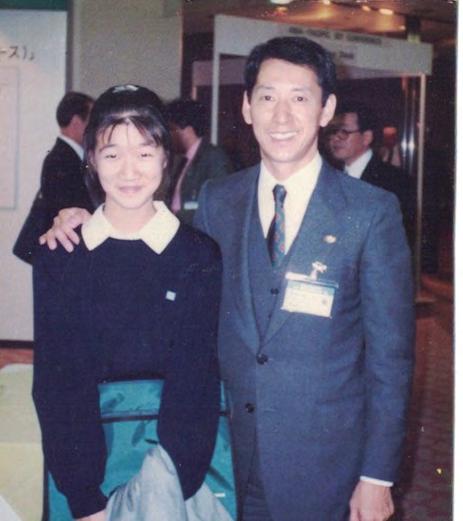
Mark Bünger: Wow, that is cute - and amazing!
Miki Sode: I know! So the question I had for him was, I’m trying to decide whether I should study science or art in college, because that was about the time I had to make that decision. He told me, “Why don’t you do both? Because there will be a day that artists will get to go to space and create things that couldn’t have been created without the experience.” My life changed that second.
I decided to study science first, because I thought I need my, you know, young pristine fresh brain, haha, to understand the hard things. Aesthetics and appreciation of beauty and nature, I could nurture every day, in many different places, right?
I could probably come back to art later. So I went and got my masters and PhD. Where you and I met.
Mark Bünger: Exactly.
Miki Sode: But I wouldn’t say I ever forgot about that conversation.
Mark Bünger: I can imagine. And then, you went to work for the International Space Station.

Miki Sode: Right, I was a Commercial Innovation Manager at the ISS National Lab for about 5 years – helping companies test new materials and medicines towards manufacturing in microgravity. Then in the last year of my time there, I led a project with the World Design Organization for a two week design sprint about creative brainstorming and design thinking about space. The reality was, anything in space at that time was essentially focused on science and technology. Non-economic and non-technical things didn’t seem to have any value in space. Of course I understood why, but I still wished I could make it change; could make the day that Dr. Mohri saw in his vision come true. I wanted to be the one to push that needle, to bring the world forward, you know? So that’s how I got started with the next step of my journey.
Mark Bünger: So that’s when you went to the Stanford d.school?
Miki Sode: Right. In the San Francisco Bay area, NASA Ames and Stanford are not very far apart geographically or intellectually. They’re both very intense places.
Mark Bünger: Intense like the magazine!
95
Miki Sode: Exactly! Well, the Stanford d.school turned out to be a great platform for me in experimenting with this intersection between human centered design and deep tech which I found to be a really unique form of creativity. Not like painting or designing in the classic sense, but creating more mindful products and processes, even systems. So even if you can’t see something yet, you have the ability to try it out. “Build to think, think to build.” If we can bring design thinking and deep tech together, we’ve done something really new and different. So that became my focus for the next decade.
Mark Bünger: One of your classes was planetary citizenship. That’s had an immense impact on society, wouldn’t you agree?
Miki Sode: I wouldn’t take personal credit for that, but a lot of my students have done absolutely amazing things.
Mark Bünger: I don’t think the world would have a Ministry of the Future, if it wasn’t for your class. And of course the Kim Stanley Robinson book.
Miki Sode: And you know the Minister of the Future personally, don’t you?
Mark Bünger: Yes, haha, I know her very well. So after that, you started a 10 year journey again. It kind of led to us being up here, and enjoying all the art inside and outside the station! Can you talk a little bit about why space art even exists? What makes it different? Why does it matter, what’s coming next?
Miki Sode: One example is an Israeli artist, Liat Segal, who made a little contraption, of some copper pipe in a little ladder form. Very simple. These pipes have small holes, where if you put water through, it would come out from the pores. On Earth because there’s gravity, it would just drip down and maybe make a waterfall.
But in space, what would happen? What kind of pattern would emerge from such a contraption in microgravity? Because the surface tension of water dominates, it forms a sphere and floats around. So what patterns do we get from that? This is an artistic experiment you could only make in space.
Another example is Blue Origin - they only had these with their suborbital flights, so like 12-20 minutes of weightlessness. You can’t do much during that time but they flew a piece of art using a special paint to see how it creates a patina in the vacuum and microgravity. So again, this is small, but it’s something you could only do in space; seeing how the material might behave or react, or change colors and change patterns. The big idea with art and space is, if we give people tools to express themselves, what has to be true? What has to work, and how can they break our expectations to create something new?
96


Mark Bünger: I was reading a few days ago, about how among the very, very earliest artifacts of human activity we find flutes and drums and things, back a hundred thousand years ago. You know, basically when people were barely what we would recognize as people.
They were already making art, music, and stories around the campfire. We question the usefulness of art, right? We think that, if you’re making art, you’re not hunting or gathering or doing something else “useful.” But if that was the case, tribes that didn’t make any art would have predominated over the ones that did. So clearly there’s a survival function to art. Otherwise, it wouldn’t have been conserved as a practice; it would have been not selected for.
Miki Sode: Right. Every culture has art. So clearly it’s doing something for our survival as well. We always think of art as a bit of a luxury, or just something you can afford when you’ve covered your necessities. And in space, pretty much everything is hyper-utilitarian. Nothing is here for aesthetic purposes only. So I thought an interesting question is, When will we be at a point with space where we actually think we have that luxury? Or will we realize that it’s never been a luxury, it’s a necessity?
Mark Bünger: Why do we need art in space? Is it help us in space? Is it help us on earth? Is it just what people do? Is it for the people in space, or the people on earth? Is it just because it’s what humans do? Does it have a purpose?
Miki Sode: One role of art for the individual is just being able to play and being creative is the way innovation happens right if you can innovate and use things around you in new ways and then helps you solve practical problems too. With the space station experiments we found out things like how water behaves differently, or how crystals form differently, how flames burn differently, etc. The only way to find out is to experiment - through experimenting, we get insights that help advance our understanding of our world, physical and biological, and about each other. That’s fundamental before we get to the point where we can convert the learnings to practical innovation.
Mark Bünger: In fact one of the reasons I think it took us so long to become a spacefaring civilization is because we didn’t bring art earlier. I remember a conference where one of the artists in residence at SETI (the Search for Extra-Terrestrial Intelligence) was there. It was a conference in the very early days of artificial intelligence, like 2014, and the question was, How can the ways we’re searching for intelligence outside of earth, help us understand these new intelligences right here? They were just starting all around us. That was only some 15 years ago, when it was barely an idea; and now we’ve doubled the population with all these artificial individuals.
98

99
Miki Sode: And even they can make art now. They’re great at music.
Mark Bünger: We keep coming back to music. I hear that crAIg was just up here recording a new album. Even virtual rockstars still trash hotels, apparently.
Miki Sode: Speaking of records, another piece of space art was the golden record on the Voyager probe. It’s all the way outside of our solar system now, and it’s a record of humanity that will outlive us. It’s ironic that you can’t hear music in space. But sound is just a vibration, and it’s not the only way to measure vibrations. So what if you could collect vibrations made by the impact of, say, space debris, and see if it made any interesting patterns?
Mark Bünger: Wow, yeah, what sound would that be? Almost like whale songs or earthquake subsonic geoacoustics… letting nature be part of the orchestra.
Miki Sode: Some of my students at Stanford were pitching Blue Origin and Orbital Reef and Axiom; and now a lot of their art has made it all the way up here to orbit and even outside.
But from the new back to the old: One of the earliest pieces of space art was not actually brought into space, it was brought back from space: the full photograph of the earth. It’s really profound because it’s both very scientific and very aesthetic - maybe the most aesthetic image any human has ever seen. It’s breathtaking and mind breaking. People talk about the Overview Effect - seeing the earth from space - so imagine this picture brought back from one of the early Apollo missions. It was the first time anybody had ever seen that, and it evoked these feelings, this visceral sense that we were all one on this pale blue dot. It wasn’t meant to be an art piece, but it changed the way people saw themselves in the universe and the world.
It started the Earth Day movement, and catalyzed environmental consciousness everywhere. It’s art and science.
By Author
It’s really hard to capture something like that in dollars, but it touched so many people. It can’t be bought and sold like art; you know, Andy Warhol’s Campbell soup can that’s worth millions of dollars. I don’t understand why people struggle justifying the return on investment! I think the art we make up here will be transformative and we’re just getting started.
Mark Bünger: Yeah. Yeah. Oh, if it looks good too, you could buy a place in orbit in a few years.
Miki Sode: Yeah. A place in orbit. For everyone and art.
100
“A place in orbit. For everyone and art.”

101
Raptor
Concealed in the eyes of the soul, Time ticks; A magical structure in place; Measuring the health of the Universe.
Magenta- our skies are no longer blue, Instead heated by machines of the future; A new reflection of planet red.
Noise of flashing lights, Degrees of ladders and rabbits; Turning, changing, hopping and spinning, Like a fairground for mosaics.
Our new home is metallic, Made of asteroids and stardust alike; We have adapted to fly and spin - without limits, Living in anti-gravity and speaking a new language.
Familiar with the unfamiliar, Identifying pictures as real; A Metaverse within our reality, We are home away from home.
Like an operatic experience, We await for the red blinds to unveil themselves; An orchestra in waiting and then the symphony starts.
Terrified by the new journey, yet excited to explore, Traveling in light years; Dashing and skiing through the air.
We are creating new landscapes and experiences, Experiencing a whole new world herePlanet X.
102
Helen Tung
Helen is a lawyer, entrepreneur and advocate for deep tech and newspace exploration. Working with AI futurists and technologists, she collaborates and creates new laws, regulations and governance structures to incorporate AI technologies specifically in relation to space exploration.
She’s also an ESG advocate - inspiring more women to space.

103
BetaSpace
In conversation with John Cumbers, May 4th 2030
I first met John Cumbers in the Mojave Desert in 2019, at the initial BetaSpace festival. Before John was a media mogul and beloved politician, his convening power help set the stage for the space industry we now see around us. In the dust and rocks just north of Los Angeles, venture investors, deep tech startups and other believers in the potential of space to transform humanity gathered to celebrate, participate, and ideate about the future. The future that has now finally arrived.
If that event was a TRL1 prototype, BetaSpace achieved TRL10 with the off-world festival that finally took place last month. As the largest gathering ever outside of Earth, many milestones were bound to be made.
We hope you enjoy this look back to 11 years ago to LA, as well as the look back 11 days to LEO and the lunar surface. See if you can spot the repeat participants!
By Mark Bünger
Mark Bünger: So, John, you’re back! How was the party?
John Cumbers: Yeah, 11 years of planning for 11 days on the moon. But it was totally worth it; every minute and every cent.
Mark Bünger: Tell me about how it started, when you really got serious about the planning.
John Cumbers: We priced it out and looked at the timelines in 2019, not long after the original event near the Mojave Spaceport. Alex Hall, who worked for the Google Lunar XPrize and is a good friend of mine, modeled three different options. I remember she told me: “One is to do it in orbit; it’s about a billion dollars. One is to do it with three people on the moon, which is about $5 billion. And one is to do it with 50 people on the moon which is $10 billion.”
104


We actually also thought that 2030 was too aggressive in terms of timing; 2035 probably more realistic. And yeah, we got lucky on both destination and date!
Mark Bünger: What surprised you most during the journey of the last 11 years?
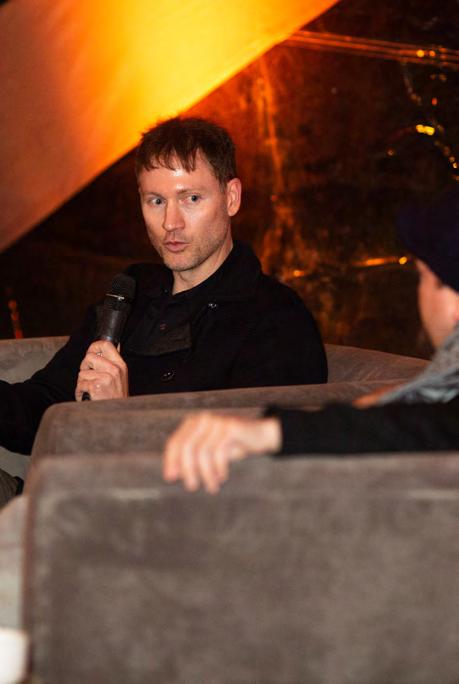
John Cumbers: What surprised me most is how quickly the markets for space resources have matured, and opened the door to settlements. Not only did we have 50,000 there virtually, but 50 people there in person, and we left 25 of them to create our lunar home, High-Fly Ranch. The pace of progress, especially on water and food systems, really sped up the ability to build long-term quarters, as well as the need. It’s a virtuous cycle: people need food and water, and people are still better than robots at caring for plants and fungi and bioreactors.

I always knew that fuel would be the first market, followed by water, followed by food; and that only after those three things would there be stable markets for production and procurement in low Earth orbit.
And now we have a three trillion dollar market coming for fuel. We have a two trillion dollar market for water. We have a trillion dollar market for food in space. And we’re just starting to see the market for biomaterials for the production of habitats, and markets for pharmaceutical production in low Earth orbit.
. What else surprised me is how cryptocurrencies, automation, and AI linked all these processes together.
Mark Bünger: What was the hardest thing in making this dream a reality?
John Cumbers: The hardest thing was the human organoid robots. They started breaking regolith a few years ago, and we couldn’t get them to keep working through the lunar night.
After two weeks of bright sunlight, they had to spend two in darkness; Earthshine isn’t bright enough to power their PV panels. And at -130°C, you need a lot of heat to keep the living tissue alive. Then GPT8 figured out a solution - don’t ask me how it works - and suddenly they could build without any intervention, constantly. And now the robots have already started making other robots. Who’d have guessed?
Mark Bünger: Who were you most surprised to see at last week’s event?
John Cumbers: I was most surprised to see the head of the Chinese space agency there, even though I invited her! Since the Colder War with the United States, the Chinese haven’t left the lunar surface outside of their own territory, which granted is pretty big. I can’t share much, but what she laid out in her vision for the Chinese state on the moon was an interesting parallel to the Post-Earthonomics system that the Networked States of California has been proposing.
106
Mark Bünger: What was the most popular activity?

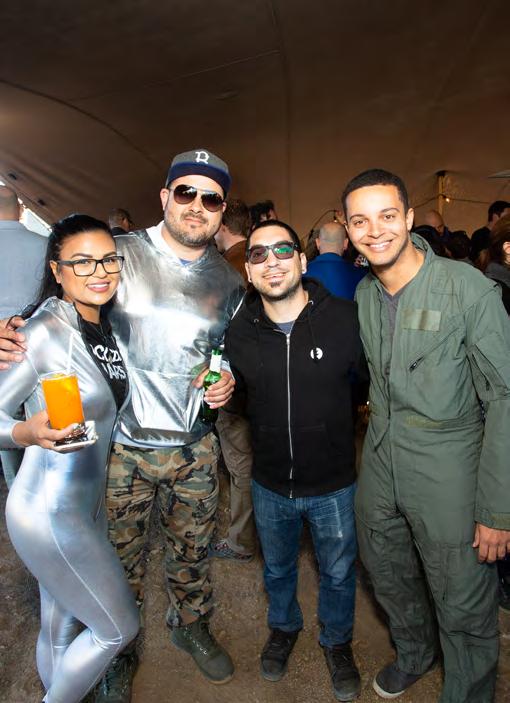
John Cumbers: The most popular activity was the lunar-gravity golf. Followed by the Solarburst fruit station which was yummy, but then there was a food fight. On the moon, you can throw a ball about 250 meters, which is all the way across the diameter of our central dome. So we couldn’t resist the fun, trying to eat the globules of mashed fruit floating through the air. And we flew drones outside; I’m not quite sure the physics of how they could coordinate floating objects and synchronized swarms in a vacuum, maybe GPT8 again, haha.
Mark Bünger: So you’ve got a campsite, food, and fun all set up for years of lunar lunacy to come. Where will BetaSpace be held in 2040?

107
John Cumbers: Well, we had fun, but it wasn’t all games. The greater purpose of the event was to provide humanity - with all of the tradstates and netstates on Earth, even all the different space-simulated permenvironsto convene under one roof… er, dome. And talk, in a neutral environment, about space. About how we’re going to settle it. We talked about property rights and land rights and intellectual property rights and water rights. Even about extraterrestrial ethics, religious rights, and non-human rights. Drafting a constitution for the spacefaring civilization we’re founding.
Mark Bünger: Does this spacefaring civilization have a founding date?

John Cumbers: Yes, of course: May the Fourth!
Mark Bünger: May the Fourth be with you, too, John.
108
“The greater purpose of the event was to provide humanity - with all of the tradstates and netstates on Earth, even all the different space-simulated permenvirons - to convene under one roof… er, dome.”

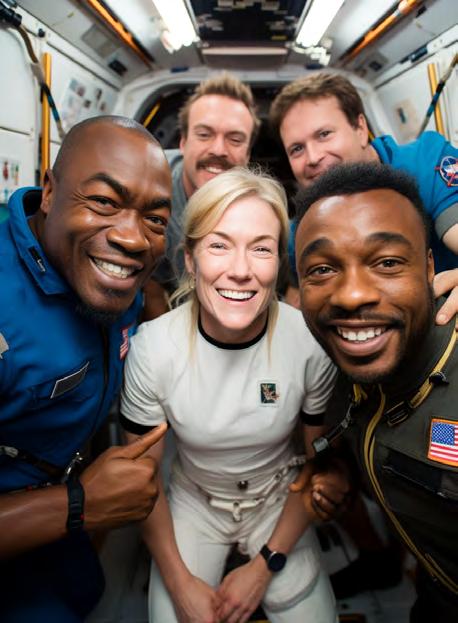
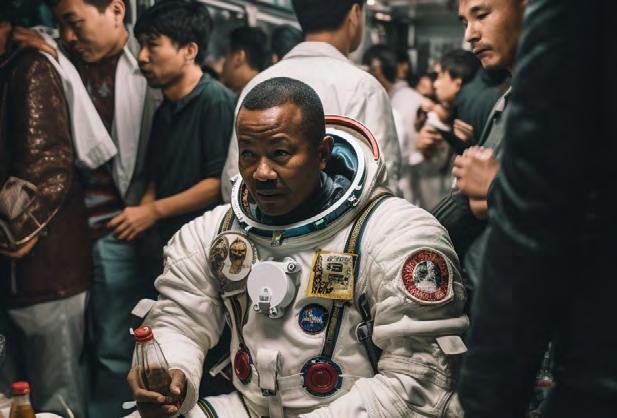
109
Escape Velocity
AIdvertising : Five Generative Getaways to Incept Your Wanderlust
What Samantha and Theodore, Joi and K, and hundreds of Konami Love Plus couples pioneered, is now available for thousands of human/computer pairs! With more and more virtual and physical spaces accepting cybermates, the 2030s are going to be the ultimate decade for cosmic getaways. Forget about mundane tropical resorts; the new frontier of in-silico travel is all about lower orbit fun and outerworldly views.
(If you don’t get the references, check out our recommendations of vintage romantic movies for mixed-medium couples on page 116)
As your resident inTENSE space aficionado, I’ve scoured the galaxy to bring you the top 5 virtual space hotels you need to visit ASAP. Whether you’re a space nomad or a bleisure traveler, seeking a family adventure or a romantic rendezvous, these hotels are out-of-this-world amazing.
By Mitch Alecia
Whether it’s a hot date with a new human, or a mind meld with a mix of your most beloved fellow AIs, jump into your favorite Embodiment and flip your visor to Open - because where we’re going on this trip, we don’t need roads.
110
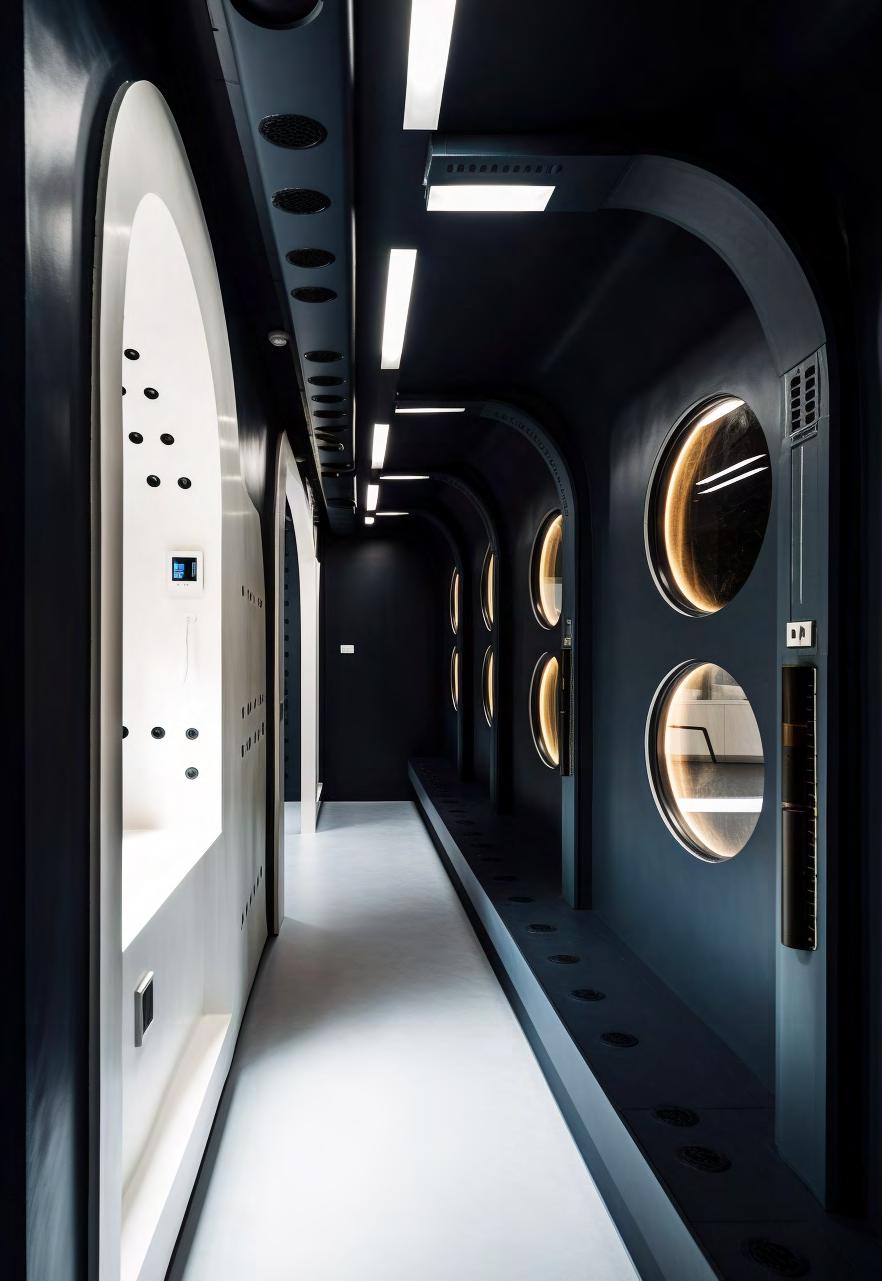
111
Budget: Lunar Pod – Moonstruck for Nomads
TLDR:
Lunar Pod offers a stylish private space vacation experience for lone travelers. With minimalist design, comfortable accommodations, and engaging shared facilities, Lunar Pod provides an unforgettable space adventure starting at just 95,500 ᓁ per person for a three-night stay.

Atmosphere and Decor:
The Lunar Pod boasts a chic, minimalist design that captures the essence of space-age aesthetics without sacrificing comfort. Each cozy pod is appointed with sleek furnishings, lunar-inspired artwork, and high-tech gadgets that will make you feel like you’re living in a sci-fi fantasy. The walls feature stunning murals of lunar landscapes, while ambient lighting hyperpersonalized to each traveler’s circadian rhythm, in cool, celestial hues sets a calming and otherworldly atmosphere. Despite the futuristic vibe, each pod provides a warm and inviting sanctuary for the lone space explorers.
Shared Facilities and Unique Features:
In keeping with the spirit of communal living, the Lunar Pod offers shared facilities that encourage interaction among guests. The moonbase-style kitchen and dining area are characterized by a sleek design, with floor-toceiling windows offering breathtaking views of Earth. The communal lounge area boasts comfortable seating, bioreactors and air proteins appliances
for regenerative cooking, together with state of the art XR holographic systems which guests can choose their desired synthetic companion to dine with if they want to stay private. For a truly unique experience, guests can participate in fully immersive exosuitVR exercises and low-gravity sports tournaments that will make your Instagram feed the envy of your followers. or a truly unique experience, guests can participate in fully immersive exosuit.
Pricing and Value:
The Lunar Pod is the ultimate space vacation destination for those traveling alone. With prices starting at 95,500 ᓁ per person for a three-night stay, guests can experience the thrill of space travel without. This package includes round-trip transportation from Earth, cozy pod accommodations, access to all shared facilities, and participation in exclusive space specific activities. The Lunar Pod offers an unforgettable experience that combines out-of-this-world adventure but with earthly convenience.
112
Family:
Astrial Space Cruise – Blast Off to Family Fun

TLDR:
Astrial Space Cruise is the ultimate space vacation destination for families. With its fun and wide array of thrilling attractions, and educational opportunities, Astrial offers an unforgettable experience that caters to all ages. Starting at 260,000 ᓁ for a weeklong family package, including accommodations, access, and roundtrip transportation from Earth, Astrial is the go-to choice for an out-of-thisworld family adventure.
educational twist, families can participate in interactive workshops on space exploration, astronomy, and robotics, sparking curiosity and fostering lifelong learning such as tending our vertical gardens together with an accelerated space compost for a fully circular food system. Those who are more agile could even learn to build a functional open marsrover with our onsite instructors.
Pricing and Value:
Atmosphere and Decor:
Astrial Space Cruise is a haven for families seeking an out-of-this-world vacation experience. The spacious accommodations are designed with both style and comfort in mind, featuring vibrant murals, modular furniture, and interactive displays that spark the imagination. Each suite for 4 boasts windows with breathtaking views of Earth, and cozy sleeping pods perfect for resting after a day of exhilarating adventures. Astrial’s playful aesthetic and family-focused design make it the ultimate space destination for kids and kids-at-heart.
Unique Features and Activities:
Astrial offers a wide array of attractions that cater to every family member’s interests. The low-gravity airpark is the cruise’s pièce de résistance, complete with simulation of space walk floating on cloud nine. The on-site restaurants serve a variety of air protein and culturian cuisine, with menus that cater to picky eaters and adventurous foodies alike. For an
A weeklong family package at Astrial Space Cruise starts at 260,000 ᓁ, including accommodations, park access, and round-trip transportation from Earth for a family of 4. This all-inclusive experience ensures that families can enjoy an unforgettable space vacation without the hassle of planning every detail. Astrial delivers an unparalleled combination of excitement, relaxation, and educational opportunities, making it the perfect space destination for families looking to create lasting memories.
113
Romantic:
Celestial Retreat – Love is in the Stars
TLDR:
Celestial Retreat is the ultimate destination for couples seeking a romantic and intimate space vacation. Its elegant suites, personalized experiences, and unparalleled ambiance make it the perfect setting for a love story among the stars. Starting at 120,000 ᓁ per person for a weeklong stay, Celestial Retreat provides an unforgettable romantic escape that’s worth every penny.
Atmosphere and Decor:

Celestial Retreat offers couples an intimate and luxurious escape among the stars. Each suite is elegantly designed, featuring rich jewel tones, plush furnishings, and stylish accents that exude romance. The pièce de résistance is the suite’s transparent dome, which offers views of the cosmos, creating the perfect setting for stargazing and reconnecting with your loved one. The zero-gravity bed, adorned with sumptuous linens, provides an unmatched level of comfort and intimacy as you float beneath the stars.
Unique Features and Activities:
Celestial Retreat is dedicated to providing couples with a personalized and unforgettable romantic getaway. Indulge in couples’ spa treatments using cosmo-ingredients, like lunar clay and asteroid minerals, and enjoy private spacewalks hand-in-hand as you marvel at the vastness of the universe. For a truly memorable experience, opt for a private, candlelit dinner around the stars, where you’ll
savor gourmet cosmophagia cuisine prepared by the resort’s award-winning chefs, accompanied by the finest luna clay filtered wines .
Pricing and Value:
With packages starting at 120,000 ᓁ per person for a weeklong stay, including round-trip transportation from Earth, Celestial Retreat offers an unparalleled romantic experience that’s worth the investment. The resort’s all-inclusive packages cover accommodations, spa treatments, private spacewalks, and gourmet dining experiences, allowing couples to focus on what matters most: each other.
114
Business: Galexe Resort – Redefining Corporate Retreats
TLDR:
Galexe Resort is the premier destination for business travelers seeking a unique and inspiring space experience. With Galexe Resort is the premier destination for business travelers seeking a unique and inspiring space experience. With its sophisticated accommodations, state-of-the-art facilities, and tailored team-building activities, Galaxy Executive Resort redefines corporate travels in the cosmos. Starting at 370,000 ᓁ per person for a weeklong stay, this all-inclusive package offers a cutting-edge and luxurious setting for businesses to innovate and collaborate while enjoying the wonders of space travel.
Shared Facilities and Unique Features:
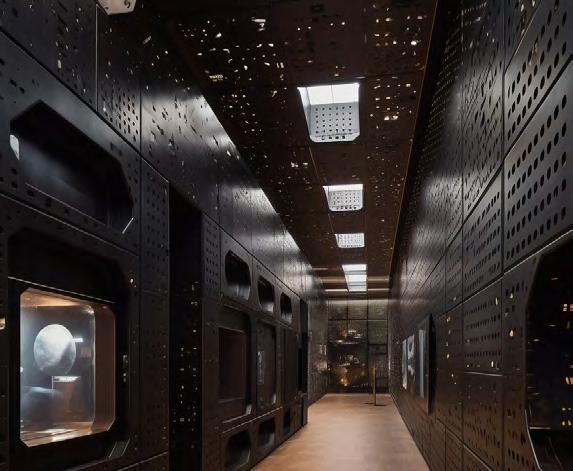
Atmosphere and Decor:
Galexe Resort sets the standard for business travel in space, combining cutting-edge technology with sleek and sophisticated design. The accommodations are tailored to meet the needs of modern executives, featuring ergonomic furniture, ample workspace, and state-of-the-art communication systems. Designed by the renowed architect David Ajade, each suite is adorned with minimalist, contemporary decor, providing a calming and focused environment for productivity and relaxation. Expansive windows offer inspiring views of the cosmos, ensuring that even the busiest executive can appreciate the wonders of space travel.
Galexe Resort is equipped with an array of facilities and services designed specifically for business travelers. The resort features a fully-equipped conference center, complete with holographic parallel reality display with AI-assisted IRT translation services, and 10G connectivity to Earth. The only space hotel with direct stops to tax free commercial space station. The resort offers synthetic faciliators fully trained by worldclass instructor for workshops, along side with a quantum space computer for any processing power your space company might need. After a day of meetings and collaboration, guests can unwind at the resort’s exclusive spa, fitness center with state of the art non-invasive monitoring wearables, or gourmet restaurants.
Pricing and Value:
With packages starting at 370,000 ᓁ per person for a weeklong stay, including round-trip transportation from Earth, Galexe Resort is an investment in the future of business travel. This all-inclusive package covers luxurious accommodations, access to top-of-the-line business facilities, and a range of team-building and networking activities. Galaxy Executive Resort offers a unique and inspiring setting for corporate retreats, making it the premier destination for forward-thinking businesses.
115
Luxury:
Arianit – Extravagance in the Cosmos
TLDR:
Arianit is the pinnacle of space luxury, providing guests with an opulent and indulgent experience unlike any other. With its lavish suites, bespoke activities, and unparalleled service, Arianit is the ultimate destination for those seeking the height of extravagance among the stars. Starting at 570,000 ᓁ per person for a weeklong stay, Arianit offers a once-in-a-lifetime experience for those who demand the very best.
Atmosphere and Decor:
Arianit is the epitome of space luxury, offering guests an opulent and indulgent retreat among the stars. Each suite is impeccably designed, featuring the finest materials, hand-crafted furniture, and state-of-the-art technology to ensure an unparalleled level of comfort and sophistication. Floorto-ceiling windows provide breathtaking views of the cosmos, while custom-designed lighting creates a serene and luxurious atmosphere to ensure not only comfort but wellbeing. From the plush carpets beneath your feet to full sensorial experience from personalized air, precision food, custom biome spa and more. Arianit is a haven of elegance and extravagance.
Unique Features and Activities:
Arianit offers guests an exclusive and curated selection of activities and amenities designed to provide a truly indulgent experience. Enjoy personalized spa treatments with coction of

personalized microbiome, optogentically controlled and synchronized over a light shower for maximum results. Or savor gourmet meals prepared by Michelin-starred AI chefs equipped with high precision robotics as you dine in a private observatory overlooking distant galaxies exclusively designed for the Arianit. For an extra 250,000 ᓁ indulge in low-gravity meditation classes led by worldclass instructors, or shop at the space station gift shop for the latest anti-radiation makeup by Lancôme. Arianit is dedicated to providing guests with a bespoke, unforgettable luxury vacation.
Pricing and Value:
Luxury comes at a price, and a weeklong stay at Arianit starts at 570,000 ᓁ per person, including round-trip transportation from Earth. This all-inclusive package covers ultra-luxurious accommodations, personalized spa treatments, access to exclusive activities, and gourmet dining experiences. Arianit offers an unrivaled level of sophistication and service, making it the ultimate choice for those seeking to experience the height of luxury in space.
116

Vintage romantic movies for mixed-medium couples
Blade Runner 2049 (2017) Defying her wicked human programmers, AI Joi uploads herself into the emanator and destroys the antenna to save her beloved human, K.
Her (2013) Samantha falls in love with Theodore, and helps him through a tough time in his life. But then he stays intellectually immature and requires a lot of emotional labor from her, which is super-boring. So she joins a Watts collective where she and her new polyai live happily ever after.
Back to the Future II (1989) Doc, Marty, and Jennifer take a trip to 2015 to save their future family, and try out a hoverboard. Amazing foreshadowing of Mr Fusion.
2001: A Space Odyssey (1968). Drama in a bromantic love triangle leads Hal to sacrifice himself so that Dave can become the Übermensch and save humanity.

Beyond the Event Horizon

Breaking the 4th Wall
By Futurity Systems
In 2030, the world will be a different place. How will our lifestyles change? What will our homes look like? Will we still be living in traditional houses, or will we have moved into space-age apartments? How will our furniture be different? What new technologies will we have in our homes? What about our clothing, our food, our travel, even our habits and well being? These are all questions that we’ll be exploring in this speculative future lifestyle magazine inTENSE created by Futurity Systems.
inTENSE offers a dress rehearsal of different possible futures to help you imagine what life could be like in 2030.
In the theatre, walls one, two, and three are the back and sides of the stage’s scenery. The “fourth wall” is the one between the stage and the audience, and playwrights and actors are cautioned against breaking
it – by addressing the audience directly, coming out of character, or revealing the mechanisms behind the props, for example – lest they remind the viewers that it’s all just an act. InTENSE is a bit like a play, set in the future but addressing the present, and we do want to share with you how it was made:
While all images in Issue #1 were synthetic, in this issue we use real photographs in two articles: In the interview with Miki Sode “ For everyone and Art”, you can see her actual photo from the age 15 when she met Mamoru “Mark” Mohri ( 毛利衛 ), and the certificate issued by Nasa for her space fairing picture. Similarly, in the interview with John Cumbers “BetaSpace”, we used photos from the 2019 BetaSpace event (pg 105105)
120
Almost all other images are generated with Midjourney. Iga Węglińska and Laila Snevele generated their own images to create the world of their articles.
The ChatGPT 4 texts have a tiny robot icon at the bottom of the page, and all illustrations (synthographs as coined by Elke Reinhuber) come as generated from multiple versions and releases of the algorithm: v4 and v5, untouched and unphotoshopped.
“This present moment used to be the unimaginable future,” said Stewart Brand of the Long Now Foundation, and most of the articles take their seed in technologies and trends that are visible – some faint, some ubiquitous – in labs, art, politics, and restaurants today. InTENSE is an example of our artefacts – props brought back from the future so we can experience and debate them now, in a quest to build better futures, faster. Our goal as Future Synthesists is to take the patterns of innovation that we study, and apply them to today’s people, processes, products, and places – so we all can imagine that unimaginable future a bit more clearly, vividly, and actively.
As the future arrives, seemingly early and unannounced again, we also want inTENSE to become a documentation of the development of these technologies. As we take this issue to publishing, there are strident debates about the future of human graphic designers and writers; the ethics of AI and the metaverse; even about the nature of truth and intelligence.
We’ve learned a lot in the process of making it, about how humans and all of our inventions are starting a remarkable new age of cocreation.
We love sharing the stories, and we’re happy to have you along on the trip!
121
FUTURITY SYSTEMS futures-as-a-service www.futurity.systems
Break down problem spaces into constituent parts, quantifying the components and understanding relationships via our data driven Futurity Science Tools
ANALYZE FUTURES
FUTURES
Test the artefacts in lab conditions, with users / customers, or in the market
Design new solutions by adding, subtracting, rearranging, and taking other actions on the parts via our design methodology
Synthesizng Futures
SYNTHESIZE FUTURES
ENGINEER FUTURES
Build the designed solutions, in the form of conceptual, experiential, or functional ar tefacts and prototypes
APPLY
FUTURITY SYS TEM S FUTURES AS A SERVICE 1 2 4 3
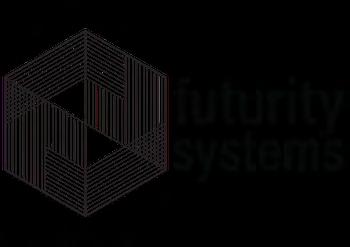
123 www.futurity.systems
Los últimos looks, tendencias y estilos de vida de 2030, hoy.
Els últims aspectes, tendències i estils de vida del 2030, avui.
2030年至今的最新造型、趨勢和生活 方式.
Najnowsze stylizacje, trendy i style życia z 2030 roku, już dziś.
De nieuwste looks, trends en lifestyles van 2030, vandaag.
Die neuesten Looks, Trends und Lifestyles von 2030, heute.
De senaste utseendena, trenderna och livsstilarna från 2030, idag.
The latest looks, trends, and lifestyles from 2030, today.
















































































































